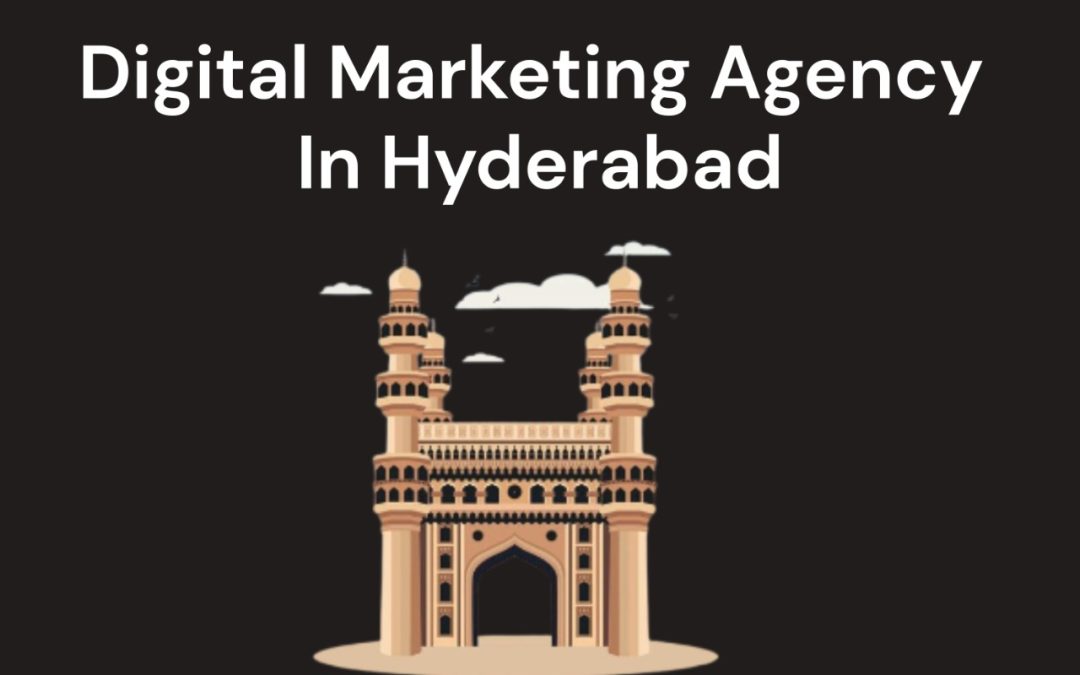
by Shashikanth Heerekar | Jul 15, 2025 | All Things about Marketing, Uncategorized
Discover the top ten digital marketing agencies in Hyderabad, starting with Oxygenites.com and Extranet Digital, Techdr. Explore expert services, including SEO, social media marketing, and PPC, that help businesses grow online with proven strategies.
Introduction
Hyderabad is rapidly emerging as one of India’s premier digital marketing hubs, providing world-class services across diverse industries. From SEO and social media marketing to paid campaigns and web development, the city is home to several agencies that help brands thrive online. Whether you’re a startup or an established company, partnering with the right digital marketing agency can amplify your growth.
Below is a list of the top ten digital marketing agencies in Hyderabad, starting with one of the pioneers in the industry—Oxygenites.com.
Oxygen
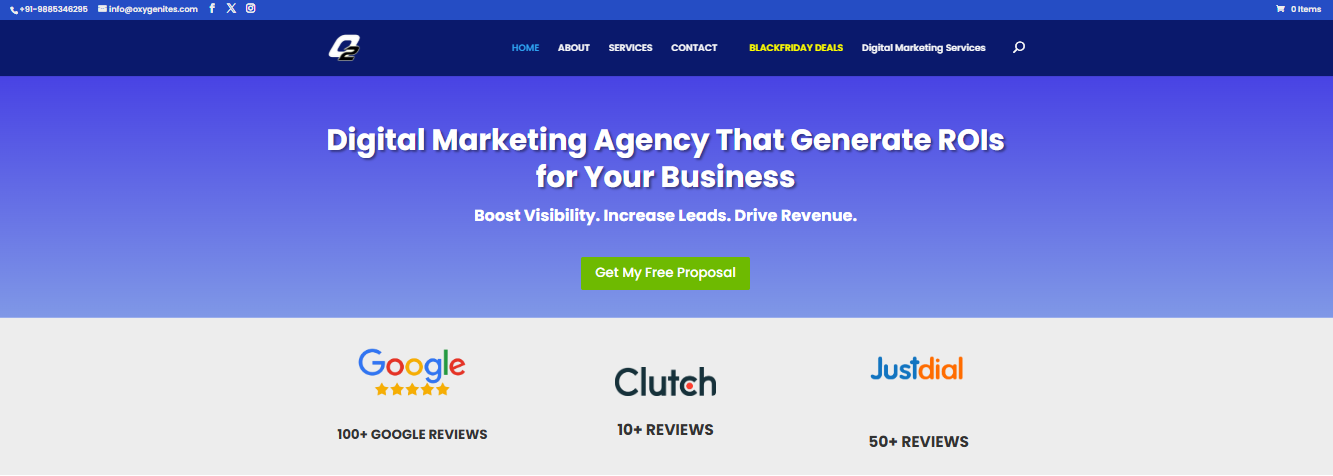
OXYGEN
With over 13 years of experience, Oxygenites.com has emerged as a trailblazer in the digital marketing space. The agency provides a full suite of services, including SEO, PPC, social media marketing, web development, content marketing, graphic design, and branding solutions. Their data-driven strategies and client-centric approach make them a go-to agency for businesses of all sizes.
What sets Oxygenites apart is their commitment to results. They combine technical expertise with creative storytelling to build powerful digital presences. Whether it’s ranking on search engines or running impactful ad campaigns, Oxygenites consistently delivers measurable growth. Their long-standing success and trusted reputation make them a top choice among digital marketing agencies in Hyderabad.
Contact Details
GrowthPixel
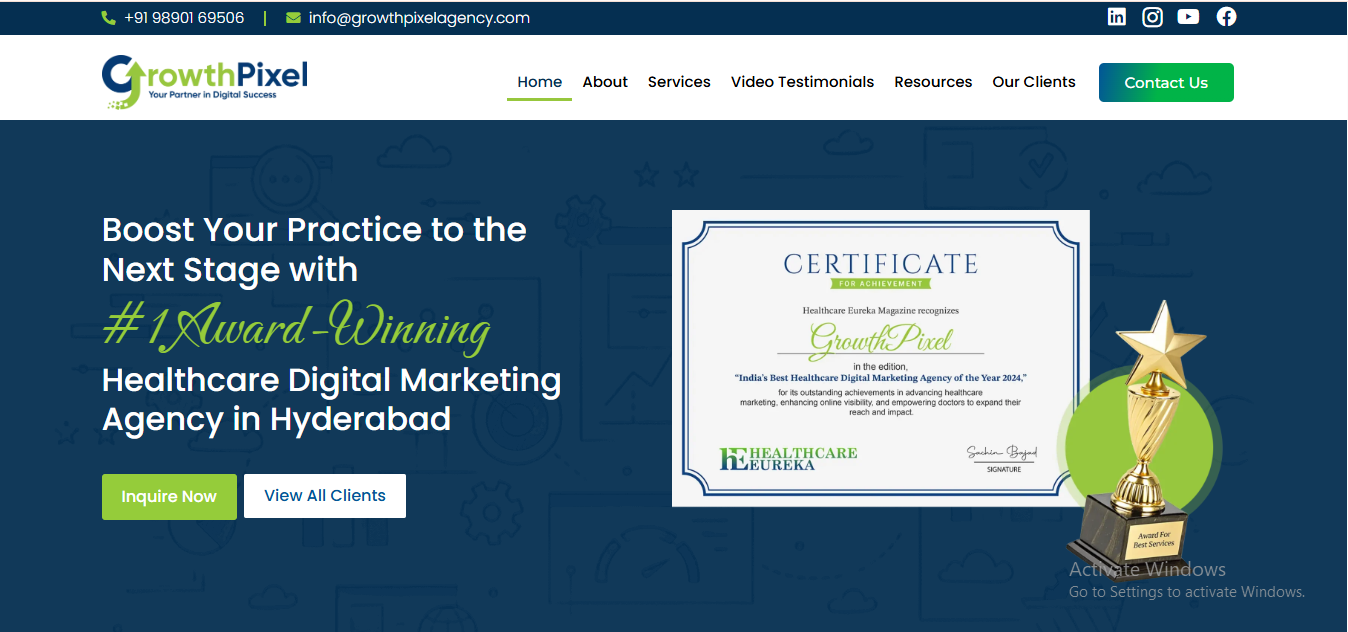
GrowthPixel
GrowthPixel is an award-winning healthcare digital marketing agency in Hyderabad, specializing in marketing solutions for doctors, clinics, and hospitals. They adopt a data-driven approach and offer services such as healthcare SEO, AI SEO, Google My Business, graphic design, website design and development, PPC, social media marketing, video ads, and content writing for healthcare professionals.
What sets them apart from the rest is their transparent reporting system. They are available for a quick call with clients whenever needed. Apart from this, they use the latest automation tools, such as Pabbly and N8N, to send inquiries to doctors over WhatsApp and email as soon as someone inquires about their services.
Digital marketing for doctors isn’t an easy task due to ethical considerations. However, Growthpixel has consistently achieved success in this area, as evidenced by its extensive roster of clients and the video testimonials shared on their website.
Contact Details
Absolute Online Web
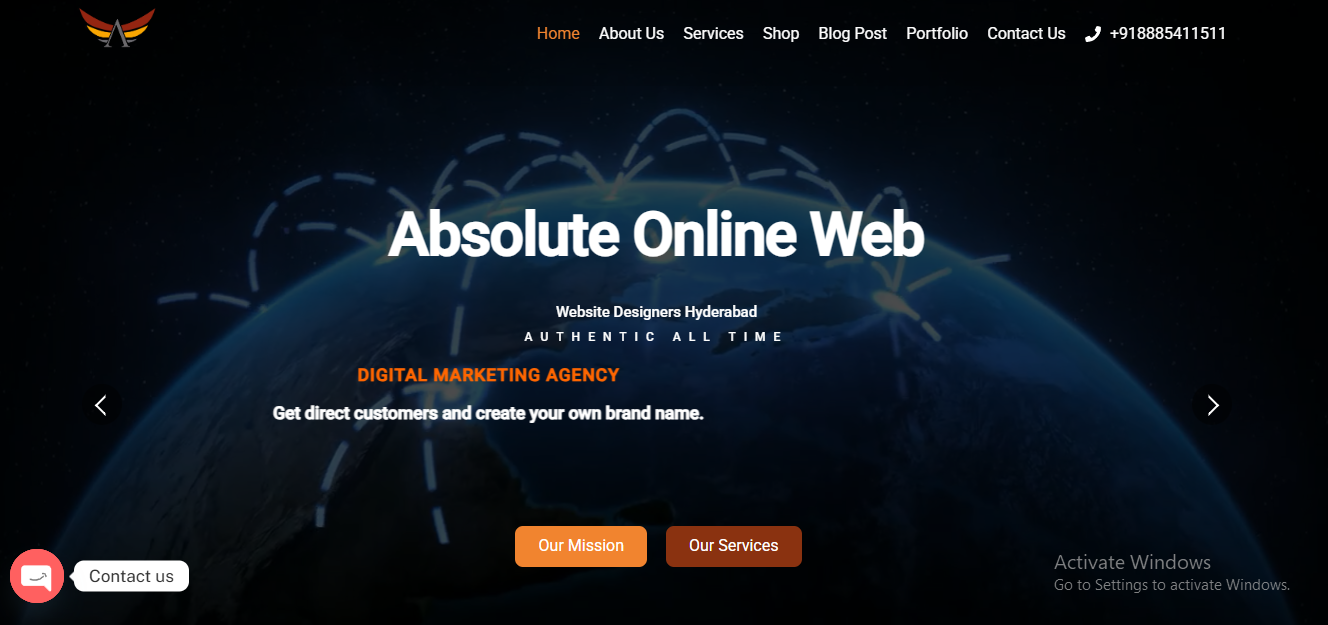
Absolute online web
At Absolute Online Web, we help you build a strong and professional online presence through customized website design, SEO, and digital marketing services. Whether you need a sleek, responsive website or want to drive traffic through search engine visibility, we tailor every solution to fit your goals. From Google Ads to social media marketing, we ensure your brand reaches the right audience effectively.
You can count on us for high-quality, results-driven services delivered on time and within budget. Whether you’re launching a new business or looking to grow online, Absolute Online Web (www.aoplweb.com) is here to support your digital journey every step of the way.
Contact Details
TechVint – Your Growth Partner for Digital Success
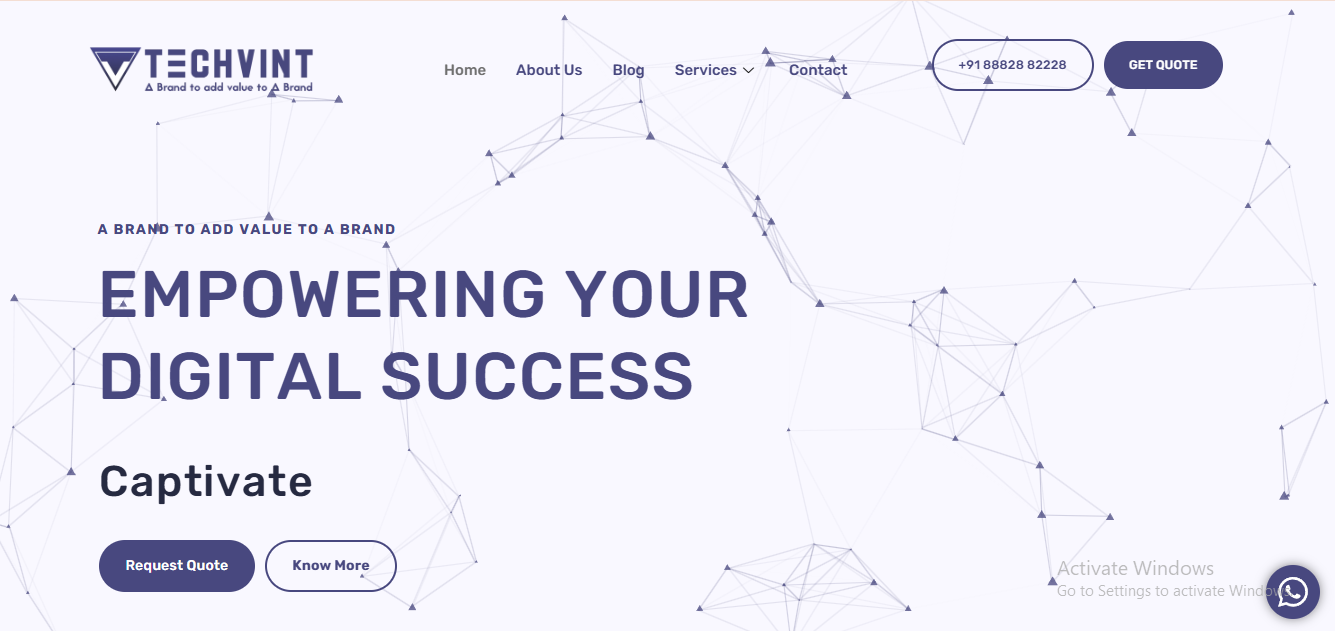
Techvint
TechVint is a full-service digital marketing and web development agency based in Hyderabad, India, offering end-to-end solutions that drive measurable results. With over 8 years of industry experience, we specialize in delivering performance-driven marketing tailored to meet the unique needs of each client, from startups to Fortune 500 companies.
Our core services include:
- Search Engine Optimization (SEO): We help businesses rank higher on Google with white-hat SEO strategies focused on high-conversion keywords, technical SEO, and link building.
- Social Media Marketing (SMM): We manage and scale brand presence across platforms like Instagram, Facebook, and LinkedIn with creative campaigns and content strategy.
- Google Ads & Paid Campaigns: Our performance marketing team creates high-ROI ad campaigns using Google Ads, YouTube Ads, and retargeting strategies.
- Website Design & Development: We craft responsive, SEO-friendly websites on WordPress, Shopify, and custom stacks, optimized for performance and user experience.
- Lead Generation: Proven techniques across multiple platforms to deliver quality leads that convert.
- Creative Services: From branding, logo design, and UI/UX to content writing and video production — we create visuals and content that resonate.
- Artist Management & Personal Branding: For influencers, DJs, and celebrities, we offer digital branding, website creation, PR, and SEO.
With clients across India, USA, and the Middle East — including Builders9, FPT India, Kidzonia, Vasavi Group, and more — TechVint is recognized for delivering results that matter.
If you’re looking for a digital partner that understands growth, performance, and brand storytelling, TechVint is your answer.
Contact Details
webbingprotechnologies
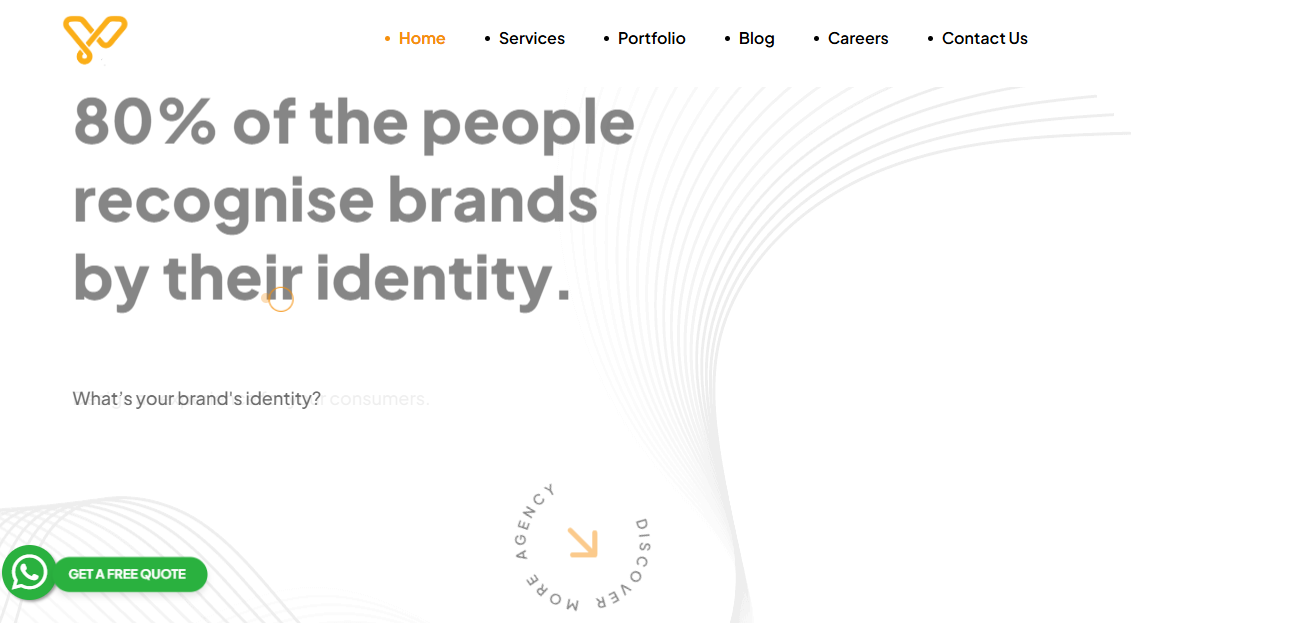
webbingProTechnologies
Webbing Pro Technologies offers a complete suite of digital marketing services designed to help businesses achieve their online growth goals. Their expertise includes SEO, social media strategies, content creation, and UI/UX designing, all focused on creating engaging digital experiences.
By combining website and app development with impactful marketing techniques, they provide solutions that enhance brand visibility, attract quality leads, and support sustainable digital success, making them a trusted partner for businesses looking to grow in the competitive online space.
Contact Details
XLENT Digital Solutions
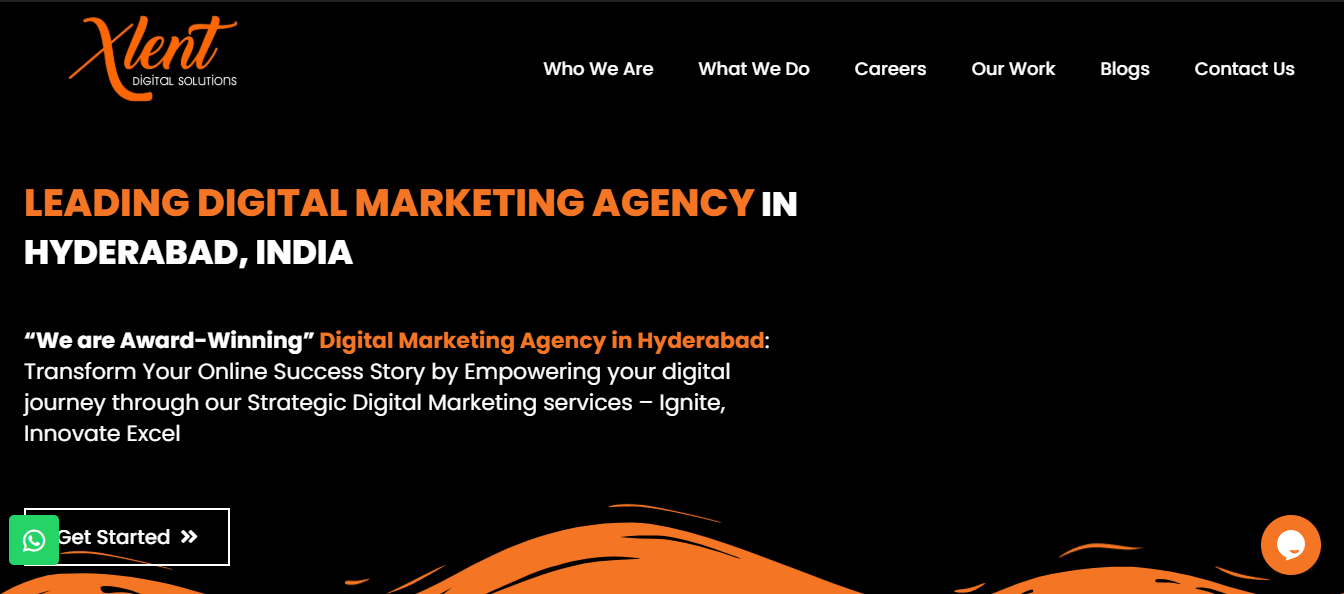
Xlent digital solutions
XLENT Digital Solutions is a professional Digital Marketing Agency In Hyderabad and web development company dedicated to helping businesses enhance their online presence and achieve measurable growth. The company offers a wide range of services, including web designing and development, search engine optimization (SEO), pay-per-click (PPC) advertising, and custom app development to improve visibility and drive targeted traffic.
Their social media marketing services help brands connect with audiences across multiple platforms, while content marketing focuses on creating engaging and impactful brand stories.
Their SEO services helped big e-commerce players to reach a higher number on organic sales and establish their brand presence on google networks.
Contact Details
KBK Business Solutions
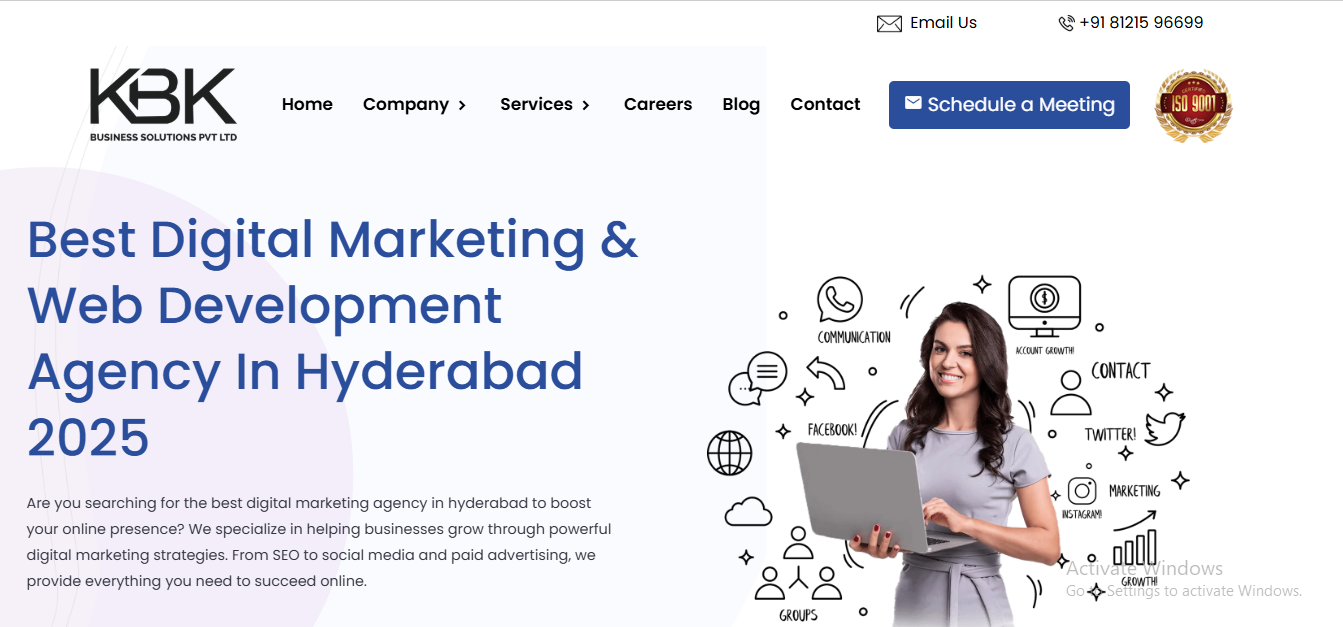
KBK business solutions
KBK Business Solutions is a professional digital marketing agency and technology company offering a complete range of digital, software, and web development services to help businesses grow in today’s competitive environment. With a focus on innovation, creativity, and performance, KBK Business Solutions delivers tailored solutions that empower brands to achieve measurable success.
Recognized as the best mobile app development company in Hyderabad, their digital marketing services include SEO services, local SEO, technical SEO, PPC, social media marketing, email marketing, content writing, and SMS marketing, ensuring businesses reach their target audience effectively. In the field of software development, the company offers expertise in Java, CodeIgniter, Laravel, CakePHP, and software testing, along with robust e-commerce portal development using OpenCart, WooCommerce, and Magento.
KBK Business Solutions also excels in web development, providing CMS web development, WordPress, Drupal, and Joomla solutions. Their UI/UX web design services cover static websites, dynamic websites, and landing pages to deliver user-friendly and visually appealing interfaces. In addition, their design services include graphic design, logo design, letterhead, visiting cards, social media posters, and brochure/leaflet/pamphlet creation.
They also specialize in video making, producing ad films, YouTube ads, product videos, and corporate films to enhance brand storytelling and engagement. With a comprehensive suite of digital, design, and development services, KBK Business Solutions stands as a trusted partner for businesses looking to elevate their digital presence and achieve long-term growth.
Contact Details
Amplus Solutions

Amplussolutions
Amplus Solutions is a leading technology and digital marketing company dedicated to delivering innovative and customized solutions that help businesses build a strong online presence and achieve measurable growth. With a focus on quality, creativity, and advanced technology, Amplus Solutions provides end-to-end services that cater to diverse business needs across industries.
Their core offerings include web designing and web development, creating visually appealing, user-friendly, and high-performing websites tailored to client goals. The company also specializes in software development and mobile application development, delivering scalable and efficient software designed for modern businesses.
Amplus Solutions’ digital marketing services empower brands to grow online through strategic campaigns and innovative techniques. They also provide web hosting services to ensure websites run smoothly and efficiently. Additionally, their bulk SMS and e-commerce solutions help businesses engage customers directly and expand their online sales reach.
The company’s expertise extends to SEO and content services, enabling businesses to enhance their visibility and brand communication across digital and offline platforms. Furthermore, Amplus Solutions offers IP services to support clients in maintaining secure and reliable digital infrastructures.
With its comprehensive suite of services and a commitment to excellence, Amplus Solutions continues to be a trusted partner for businesses seeking to enhance their online presence and achieve sustainable success in the digital era.
Contact Details
Rish Digital Media
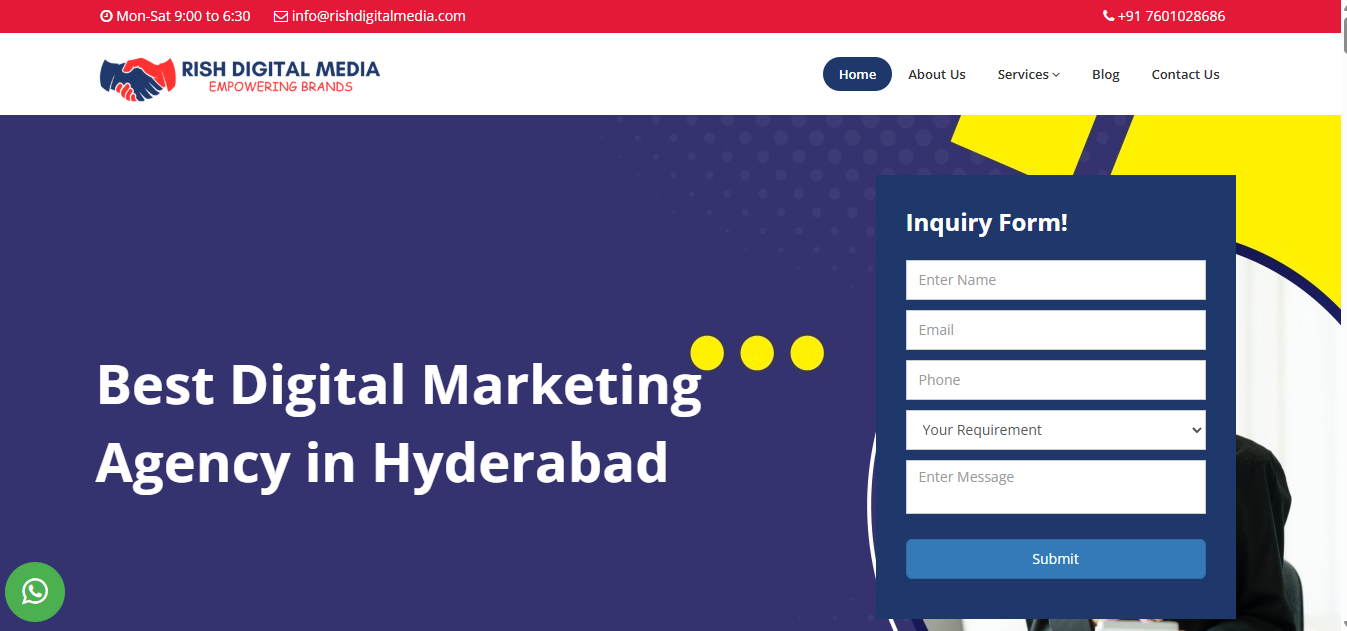
Rish digital media
Rish Digital Media is a results-driven digital marketing agency in Hyderabad, committed to helping businesses strengthen their online presence with strategic and performance-focused solutions. We specialize in digital marketing, SEO services, Google Ads (PPC), and web designing, offering customized strategies that enhance visibility, engagement, and lead generation. Our goal is to ensure businesses attract the right audience, rank higher on search engines, and build a strong digital footprint across all platforms.
With expertise in search engine optimization, paid advertising, and professional website design, Rish Digital Media helps brands achieve sustainable digital success. Our SEO solutions improve organic traffic and keyword rankings, while our Google Ads campaigns deliver maximum ROI through targeted and optimized ad strategies. Combined with modern, responsive, and user-friendly website designs, we provide businesses with a complete digital ecosystem that boosts credibility, drives conversions, and strengthens overall market positioning.
Contact Details
LaGran
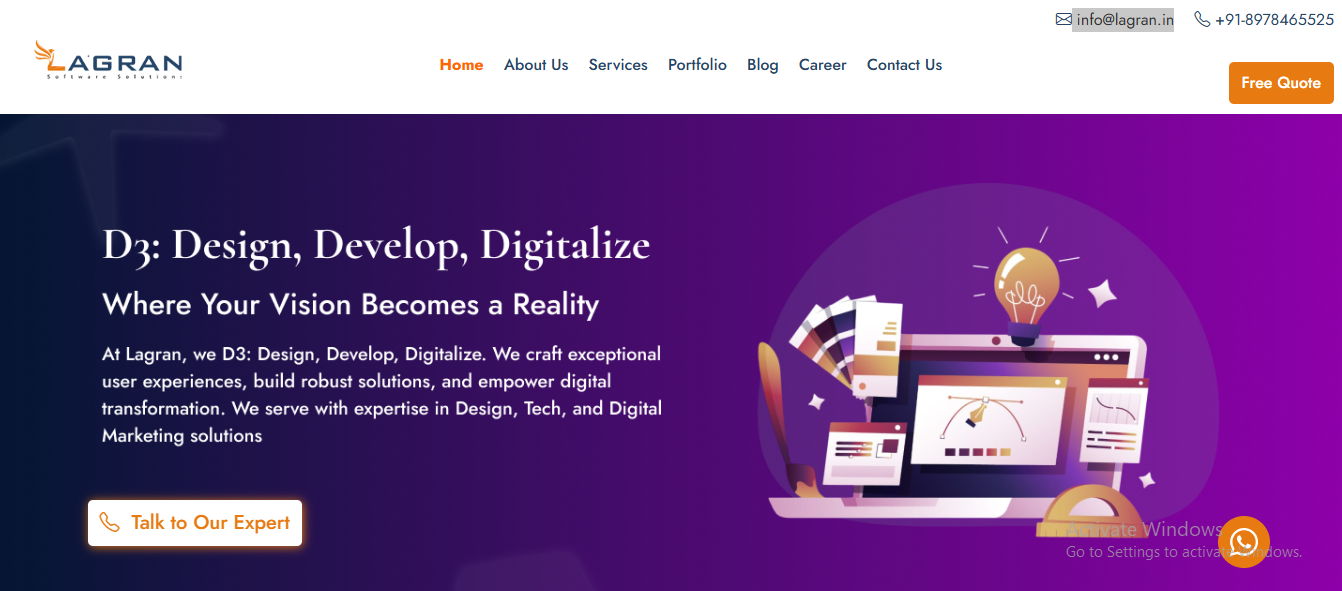
Lagran
LaGran is a versatile digital solutions company that supports businesses across marketing, technology, design, and staffing.
Their digital marketing services help clients boost online visibility, drive engagement, and amplify brand impact. In addition, LaGran offers robust tech solutions, delivering custom software and IT services tailored to business needs.
Their designing team specializes in creating visually appealing and user-centric interfaces, whether for web or mobile. Beyond technical and creative offerings, LaGran also provides staffing solutions, helping organizations build strong teams with the right talent for growth.
Building on its multi-domain expertise, LaGran continues to position itself as a reliable partner for companies aiming to scale efficiently. The company focuses on understanding each client’s unique challenges and delivering results-driven solutions that enhance productivity, streamline operations, and elevate brand value.
With a commitment to innovation and client satisfaction, LaGran ensures businesses receive end-to-end support from strategy and execution to ongoing management—making it a trusted choice for organizations seeking long-term digital and operational growth.
Contact Details
Rediger Digitech
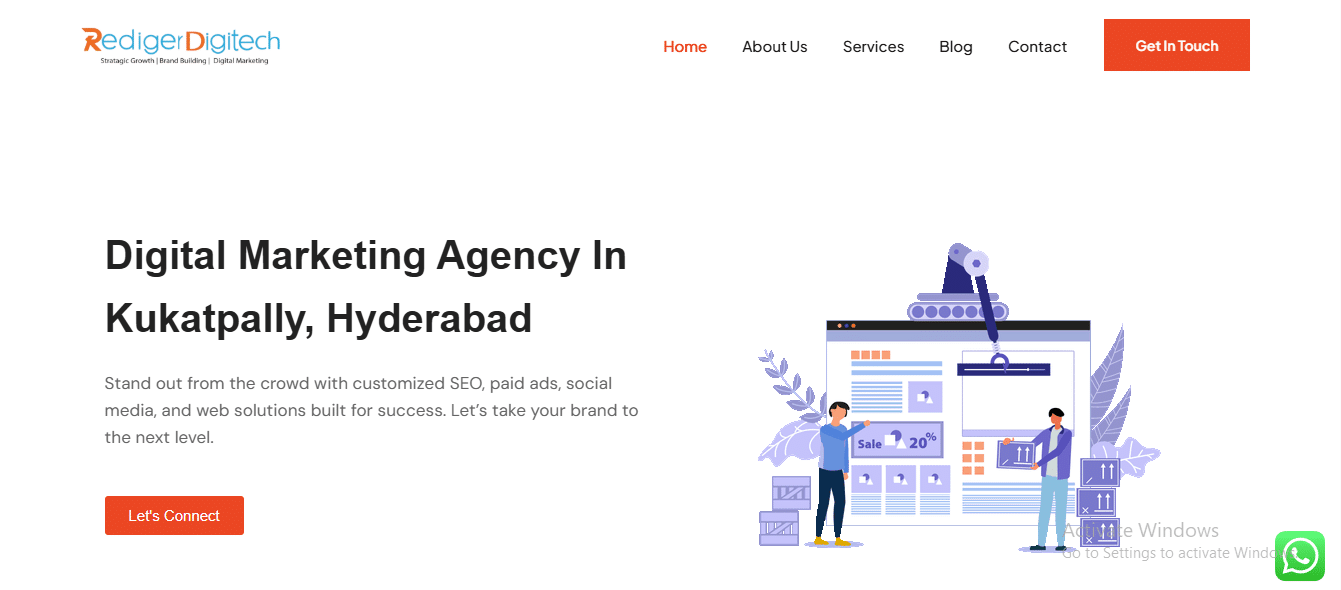
redigerit
Rediger Digitech is a dynamic and growth-focused digital solutions company dedicated to helping businesses build a strong online presence and achieve consistent results. The company offers a wide range of service
es designed to support both technical and marketing needs. Their core offerings include web development, delivering high-quality and user-friendly websites tailored to business goals, and SEO services aimed at improving search rankings and increasing organic traffic. Rediger IT also specializes in social media marketing (SMM) to boost brand awareness and engagement across major platforms, as well as Google Ads management to drive targeted traffic and maximize conversions.
In addition, the company provides email marketing services to strengthen customer communication, lead generation solutions to help businesses attract potential clients, and app development services for creating innovative and functional mobile applications. With this comprehensive service portfolio, Rediger IT empowers businesses to grow digitally and stay ahead in a competitive market.
Contact Details
Kalyan Chandra

Kalyan chandra
Kalyan Chandra is a professional digital marketing consultant dedicated to helping businesses grow through strategic, data-driven, and results-oriented marketing solutions. The company provides a comprehensive suite of services designed to enhance brand visibility, improve customer engagement, and drive measurable business outcomes. Their offerings include digital marketing consulting and PR (public relations) consulting services, helping brands build a strong reputation both online and offline.
They specialize in web analytics and business intelligence to provide deep insights that guide smarter decision-making. Their social media marketing services help businesses increase engagement and reach across major social platforms, while their expert SEO services improve website rankings and organic traffic. Kalyan Chandra also offers Google Ads and pay-per-click (PPC) advertising to generate high-quality leads quickly and efficiently.
Additionally, the company provides advanced marketing automation support through Marketo consulting and Pardot implementation, enabling businesses to streamline their marketing workflows. They also offer Wikipedia page creation services to strengthen brand authority, along with email marketing and influencer marketing services to expand reach and build meaningful customer relationships. Through this diverse range of services, Kalyan Chandra empowers businesses to scale with confidence in today’s competitive digital landscape.
Contact Details
MBL Technologies
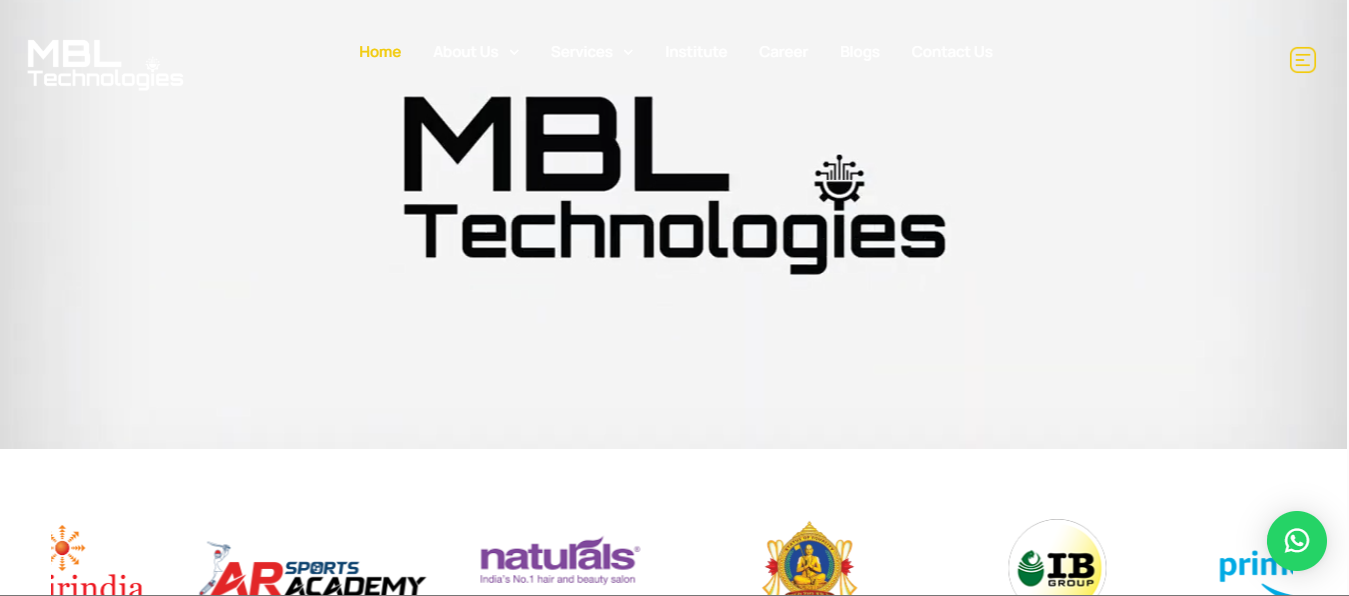
MBL technologies
MBL Technologies is a digital solutions company dedicated to helping businesses grow online by offering a wide range of services, including website development, social media management, content creation, graphic designing, influencer marketing, SEO services, application development, and paid ads. Their focus is on delivering creative, effective, and result-driven solutions that enhance brand presence, attract the right audience, and support overall business growth in the digital space.
They also specialize in social media management to help businesses build engagement, maintain consistent online activity, and connect with their target audience across major platforms. MBL Technologies provides content creation services, delivering high-quality and engaging content that enhances brand communication. Their graphic designing services ensure impactful visuals that elevate brand identity, while their influencer marketing solutions help brands collaborate with relevant creators to expand their reach.
Contact Details
The NeedleAds
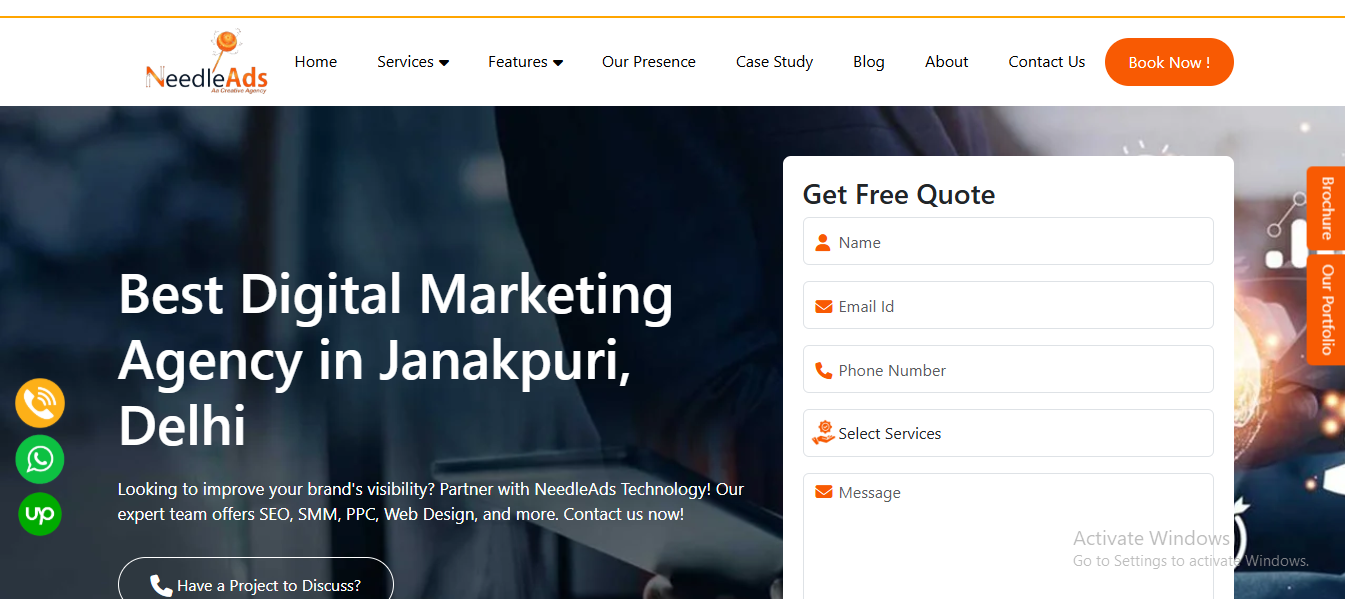
The NeedleAds
The NeedleAds is a trusted digital marketing agency that provides comprehensive solutions to help businesses enhance their online visibility and performance. Their services include SEO services, website design, website development, and website maintenance, ensuring strong and well-optimized digital foundations.
They also specialize in mobile application development, Google Ads, and local SEO services to help businesses reach targeted audiences effectively. Additionally, The Needles offers email marketing and social media marketing to build engagement, generate leads, and strengthen brand presence across digital platforms.
Contact Details
FutureGenApps
FutureGenApps is a trusted name in web design and development, known for creating stunning and responsive websites for businesses of all sizes. As a website designing company in Hyderabad, we provide complete solutions that include web designing, development, and Digital Marketing Services to help brands grow online.
Our skilled team specializes in Website Designing, Development, SEO Services, and Digital Marketing Services. We use the latest technologies like WordPress, PHP, Laravel, and more to build dynamic and functional websites that meet every business requirement. Our mission is to enhance digital visibility and drive long-term success for every client.
At FutureGenApps, we focus on turning ideas into reality. With on-time delivery, long-term support, and 100% satisfaction, we aim to create professional websites and offer result-driven Digital Marketing Services across Hyderabad and beyond.
Contact Details
Sieve Softech
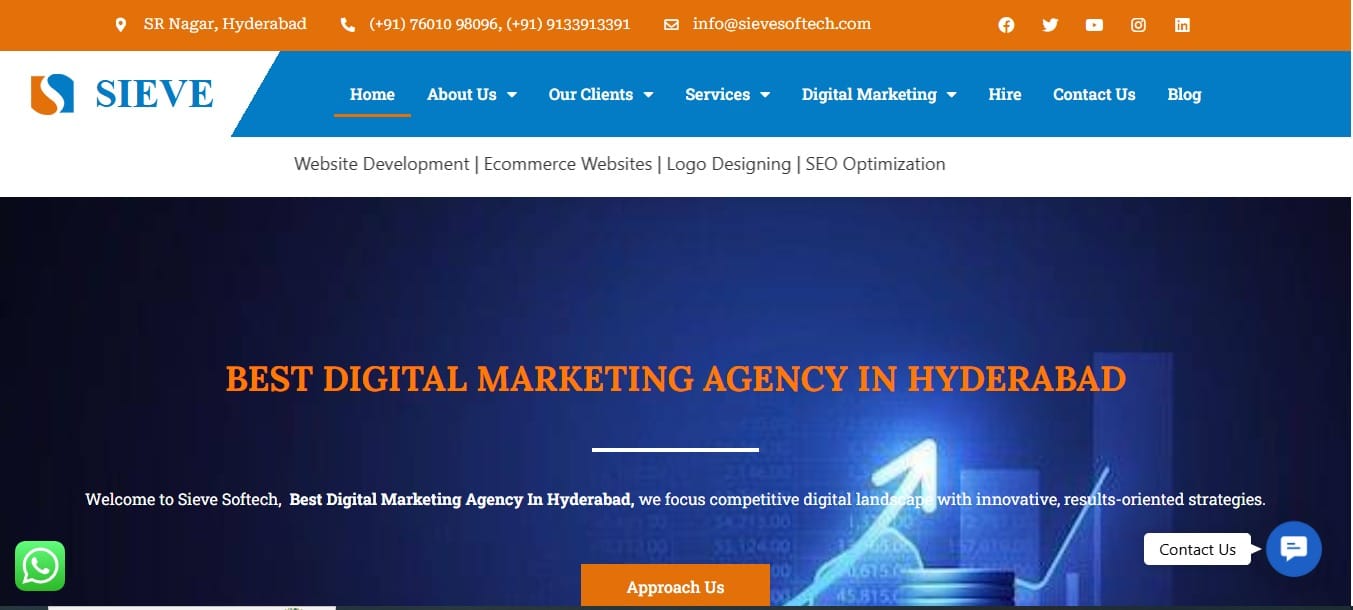
Sieve
Sieve Softech is a trusted digital marketing agency in Hyderabad dedicated to helping businesses strengthen their online presence and achieve measurable growth. The company offers a wide range of digital marketing services, including SEO, social media marketing, PPC, and content marketing, all tailored to meet each client’s unique goals.
With a focus on strategy and innovation, Sieve Softech creates customized campaigns that enhance visibility, increase engagement, and build brand credibility. Their team of experts uses data-driven methods to ensure every marketing effort delivers impactful and lasting results.
What truly sets Sieve Softech apart is its client-first approach and commitment to excellence. By combining creativity, technology, and proven techniques, they help businesses connect with their audience effectively and grow in the ever-changing digital world.
Contact Details
Phone: +91 7601 098 096
Email: [email protected]
website: https://sievesoftech.com/
Conclusion
Hyderabad has established itself as a thriving hub for digital marketing, offering a diverse range of services that empower businesses to build a strong online presence. From SEO and social media management to paid advertising, content marketing, and web development, the city’s agencies cater to brands seeking measurable growth and digital transformation. With a focus on innovation, performance, and data-driven strategies, these digital marketing experts help businesses stay competitive in an ever-evolving online landscape, making Hyderabad a preferred destination for brands looking to expand their reach and achieve sustainable success.
FAQS
1. Digital marketing agencies in Hyderabad offer what essential services?
A. Most digital marketing agencies in Hyderabad provide services like SEO, social media marketing, pay-per-click advertising (PPC), content marketing, email marketing, and web development to enhance online visibility and business growth.
2. How can a digital marketing agency help my business grow?
A. A digital marketing agency can help generate more leads, improve search engine rankings, boost brand awareness, and increase sales through tailored online marketing strategies.
3. Are digital marketing services suitable for small businesses or startups?
A. Yes, many agencies offer scalable and affordable digital marketing packages that are perfect for startups and small businesses looking to build their online presence.
4. What industries do digital marketing agencies in Hyderabad usually serve?
A. They serve a wide range of industries, including healthcare, e-commerce, education, real estate, IT, hospitality, and local businesses, offering customized solutions based on business goals.
5. What makes Hyderabad a good city for digital marketing services?
A. Hyderabad is a major tech hub in India, with access to skilled professionals, advanced technology, and a growing digital ecosystem—making it a hotspot for quality marketing services.

by Shashikanth Heerekar | Jul 10, 2025 | All Things about Marketing
Explore the top digital marketing institutes in Delhi offering expert training in SEO, social media, PPC, and more to boost your career in the online world.
Introduction
In today’s rapidly evolving digital world, every business grows from a small store to a major brand. This is why digital marketing skills are in demand everywhere. Whether it’s SEO, social media marketing, paid advertising, or content creation, companies are always seeking professionals who can help them grow online. If you are someone who wants to make a career in this field or upgrade your skills, then the best place to start learning is from a reputable digital marketing institute.
Delhi, as the capital, has become a hub for top-quality digital marketing institutions. These institutions not only provide practical training but also help students understand the real-world needs of the digital industry. From class sessions to live projects, courses are designed to prepare for a job.
It plays a big role in choosing the right institution and how well you learn. A good institution does not just teach you tools and technology—it guides you, cleans your doubt, gives personal attention, and, most importantly, helps you grow with confidence.
In this blog, we will discover some of Delhi’s best digital marketing institutions that can help you kick off your journey in this exciting industry.
Adnet India
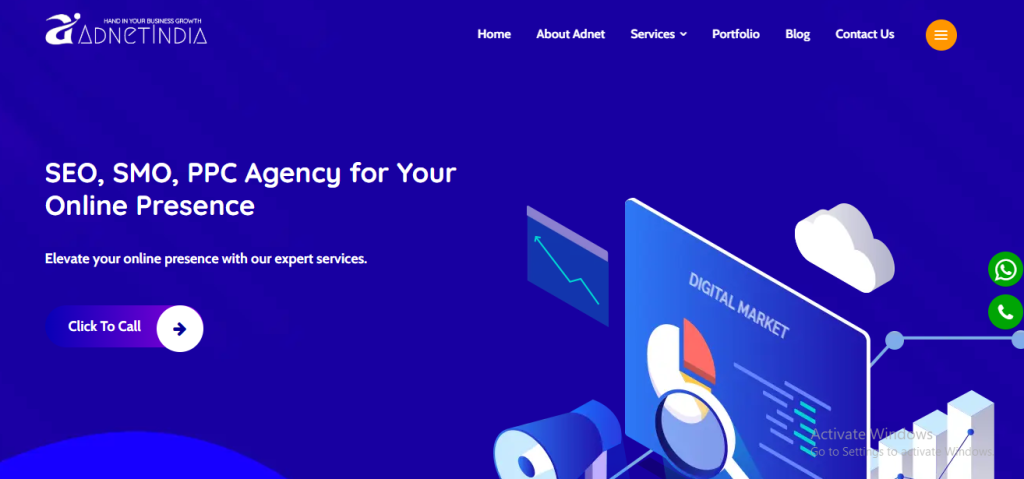
Adnet India
Adnet India has been a leading digital marketing and web solutions provider since 2014, offering an extensive suite of services designed to increase online visibility and drive business growth. Adnet has digital marketing expertise and holds expertise in Search Engine Optimization (SEO), Pay-Per-Click (PPC), Geo-Targeting SEO, Location-Based SEO, and Social Media Optimization (SMO), with a strong focus on lead generation for your company.
Why Adnet India Experts in SEO for the Last 12 Years?
Adnet India stands out as a premier choice for SEO promotion due to its proven track record of delivering excellent results. With a team of experienced professionals who are well-versed in the intricacies of search engine algorithms,
Adnet India ensures that your website gains the visibility it needs to attract potential customers. The company uses a combination of the latest SEO techniques and tools to enhance the online presence of its clients. By focusing on both on-page and off-page optimization, Adnet India can effectively improve a website’s ranking on search engines like Google, making it easier for businesses to reach their target audience.
Another reason to choose Adnet India is its commitment to personalized service and long-term relationships with clients. Understanding that every business is unique, the company takes the time to assess each client’s specific needs and goals.
They are in the field of web development. Adnet India delivers comprehensive solutions, including static & dynamic website design, panel-based e-commerce website development, WordPress site creation, and app development. The company also excels in promotional activities, offering services such as promotional bulk SMS, bulk email marketing, voice call marketing, and transactional SMS to help businesses expand their reach.
Furthermore, Adnet India provides robust web hosting solutions, including domain name registration, Windows and Linux hosting, reseller hosting, and e-commerce hosting, ensuring reliable and secure online performance for every client.
Below are the contact details.
website: https://adnetindia.in/
Mobile number: 9654403309
Mail ID: 
Maya Techno soft
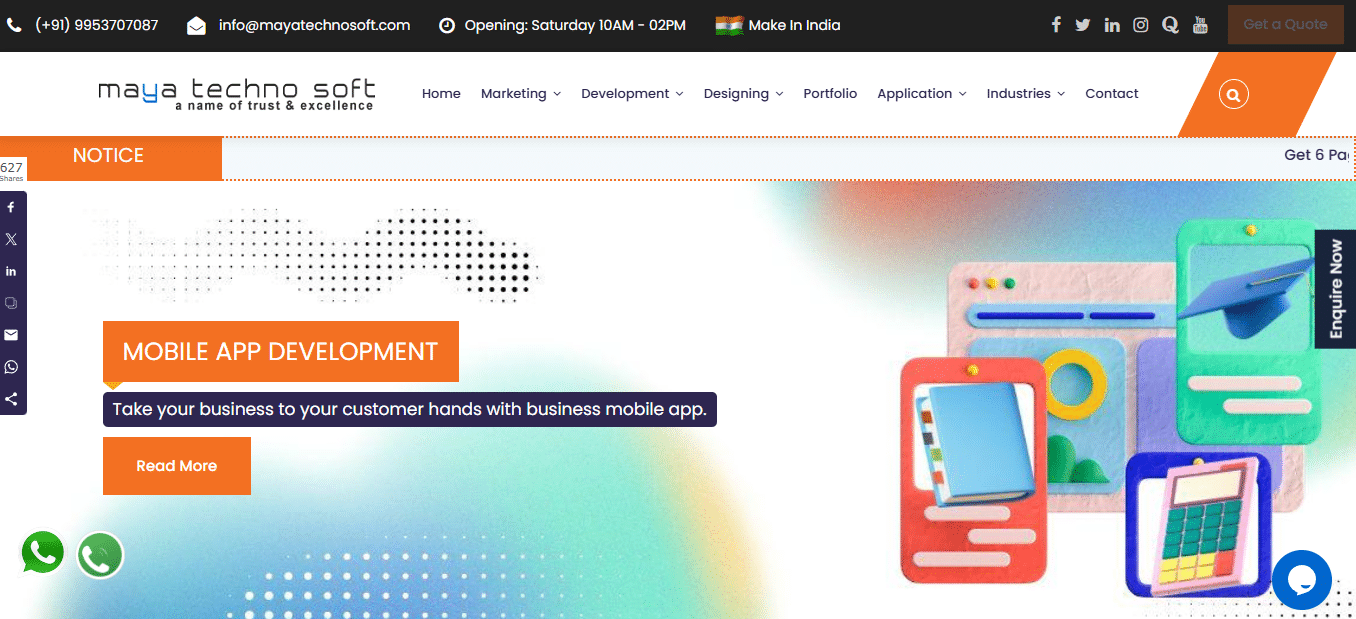
mayatechnosoft
Maya Techno Soft is a leading digital marketing company dedicated to helping businesses strengthen their online presence through innovative and effective marketing solutions. Their wide range of services includes Search Engine Optimization (SEO) and Search Engine Marketing (SEM) to improve visibility on search engines.
Maya Techno Soft is a versatile digital solutions company dedicated to helping businesses enhance their online capabilities and operational efficiencies. Their service offerings include website designing & development, mobile app development, e-commerce web development, hotel booking platform development, travel portal development, and LMS (Learning Management System) portal development.
They specialize in social media optimization and social media marketing to enhance brand engagement across various platforms.
The company also offers bulk e-mail marketing and bulk SMS marketing for direct customer communication. Additionally, Maya Technosoft provides Google Ads, Instagram Ads, Facebook Ads, Twitter Ads, LinkedIn Ads, and YouTube Ads marketing to reach audiences through targeted advertising. Other services include blog marketing, brand marketing, and content marketing, ensuring a complete and results-driven digital marketing strategy for every business.
Below are the contact details.
website: https://www.mayatechnosoft.com/
Mobile: 9953707087
Mail ID: www.mayatechnosoft.com
DSIM
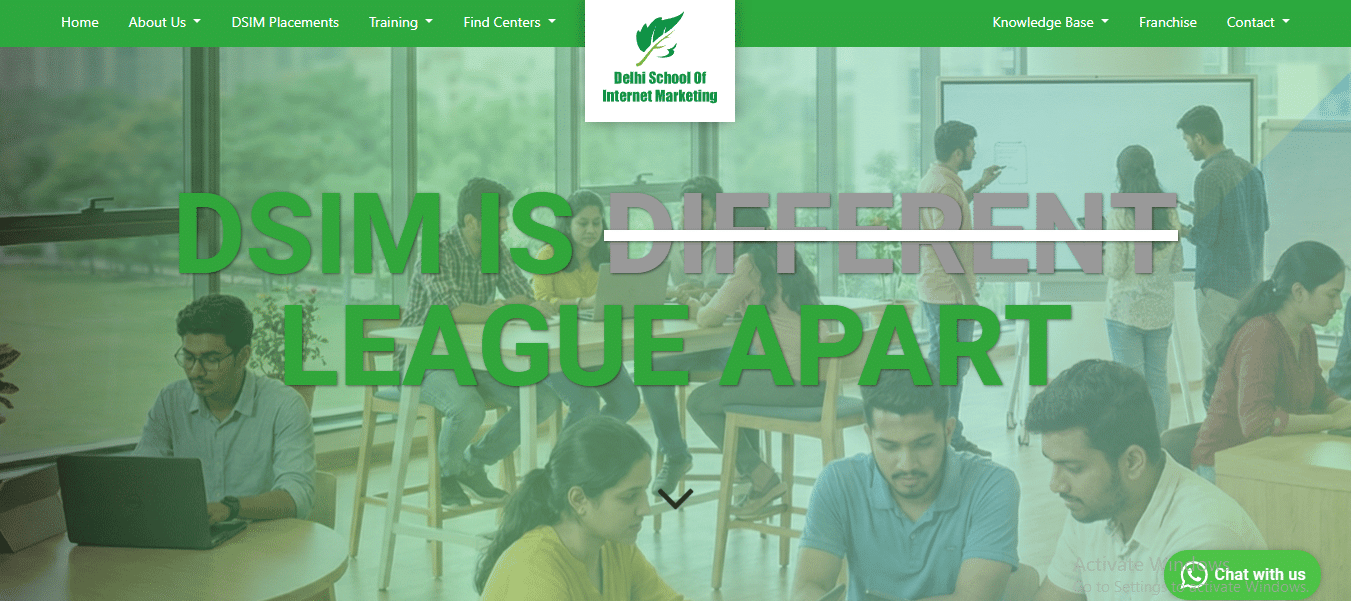
DSIM
DSIM (Delhi School of Internet Marketing) is a leading digital marketing training institute known for offering a comprehensive and industry-oriented curriculum designed to equip learners with practical marketing skills.
The institute provides in-depth training through its core subjects, including Search Engine Optimization (SEO), Search Engine Marketing (SEM/Google Ads), Social Media Marketing (SMM), Email Marketing, Inbound Marketing, and Web Analytics, ensuring students gain a strong foundation in all major digital marketing areas.
In addition to the core curriculum, DSIM offers a wide range of specialization modules such as Advanced Facebook Marketing, Integrated Digital Marketing Strategy, Affiliate Marketing, Media Planning & Buying, Freelancing in Digital Marketing, E-commerce Listing and Marketplace Selling, Programmatic Marketing, Adobe Analytics SiteCatalyst, Infographic Resume Creation, Content Marketing (in association with LinkedIn), and Digital Marketing using ChatGPT and AI Tools.
These advanced modules enable learners to refine their expertise, explore niche skills, and stay updated with the latest trends and technologies in the digital marketing industry.
Below are the contact details.
Website: https://www.dsim.in/
Mobile Number: 8882999818
Email ID: [email protected]
ITTCD Institute
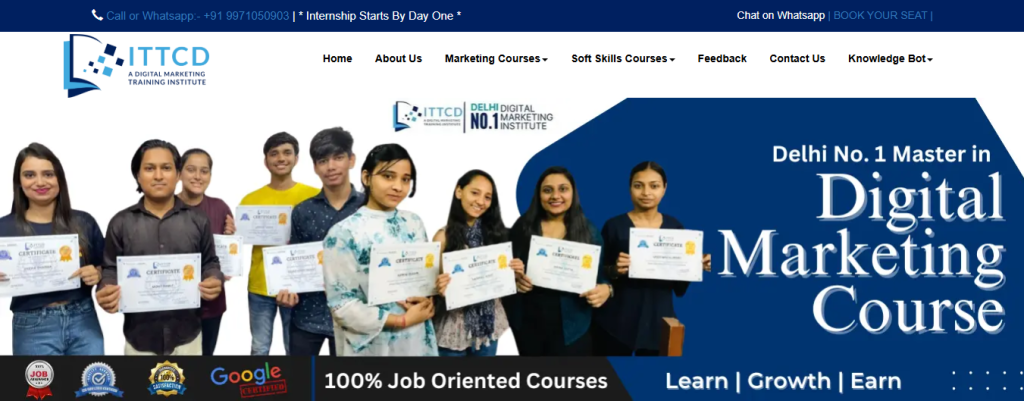
If you’re looking for a digital marketing institute in Delhi that’s focused on practical learning and real results, IT Training Course Delhi is a great option to consider. They offer a wide range of digital marketing courses designed for students, working professionals, and even business owners who want to understand how online marketing works.
What I liked about them is that they don’t just stick to theory—they focus a lot on hands-on training. You get to work on live projects, and the trainers seem experienced and supportive. Their course covers everything from SEO, social media, and Google Ads to content marketing and analytics.
Another benefit is that they offer both classroom and online training options, which is particularly helpful if you’re managing work or college responsibilities. Additionally, they provide certification after the course and offer assistance with placements, which is a significant advantage for fresh graduates.
Overall, if you’re serious about learning digital marketing in Delhi and want proper guidance, this institute is a reliable place to start.
Below are the contact details.
Website: www.ittrainingcoursedelhi.in
Mobile Number: +91 99710 50903
Email ID: [email protected]

by Shashikanth Heerekar | Jul 3, 2025 | All Things about Marketing
Struggling to get noticed? Learn the best digital marketing tactics for local businesses in the USA & increase your online presence!
Introduction
Digital marketing is a must for small businesses. It helps local businesses grow by reaching more customers online. Using the right digital marketing strategies, owners can attract and keep customers. Simple marketing tactics for small businesses, like social media and email, make a big impact. Follow these digital marketing tips for small businesses to boost sales and success in small business online marketing!
The Current Landscape of Digital Marketing for Local Businesses
Success requires a strong internet presence, particularly for small firms. With the rise of the Internet With social media, digital marketing has become the key to growing a brand’s customer base for small enterprises. Whether you’re running a bakery, a local boutique, or a home service company, using the right Digital marketing tactics may significantly impact small firms.
Traditional advertising, like flyers and newspaper ads, is no longer enough for digital marketing for local businesses. Customers now search online for products and services, making online marketing for small companies necessary. A well-planned digital marketing strategy for small businesses can boost visibility, attract new customers, and keep existing ones engaged. Many small businesses struggle with marketing techniques small business because they lack resources or knowledge. However, even a small budget can create a big impact with the right approach.
There are many ways to use local business digital marketing effectively. Search engines, social media, email campaigns, and paid ads play crucial roles. Creating a small business digital marketing strategy involves choosing the best platforms, understanding the target audience, and using the right online marketing strategies. Whether marketing online for small businesses through social media or improving a website’s SEO, small businesses can find ways to compete with bigger brands.
With the appropriate internet marketing techniques, tiny companies, even small companies, can stand out. This guide will explore advertising strategies for small businesses, different digital marketing ideas for small businesses, and ways to maximize growth with Internet marketing for local small businesses. Whether you’re looking for marketing help for a small business or need to improve your web marketing small business, digital marketing can open doors to new opportunities.
Essential Digital Marketing Strategies for Local Business Success USA
Strong digital marketing strategies are essential to the success of local businesses. Whether you run a bakery, a law firm, or a home cleaning service, the right internet marketing tools can help you draw in more clients and grow your brand. Traditional marketing methods like flyers and newspaper ads are no longer enough. To compete, local companies must focus on online marketing for small business tips to reach the right audience.
A well-planned small business digital marketing plan ensures customers can easily find you online. This includes social media, email marketing, search engine optimization (SEO), and paid ads. Effective local digital marketing for small businesses lets you establish contact with prospective customers interested in your offerings. Even a small online business marketing idea like listing your company on Google Business Profile can boost visibility and increase leads.
One of small businesses’ best digital marketing strategies is creating an Internet marketing plan focusing on customer engagement. Posting valuable content on social media, running promotions, and collecting customer reviews are great ways to build trust. Additionally, an optimized website with local SEO ensures your business appears in search results when clients search for services in your area.
Investing in digital marketing for local businesses is not just about spending money on ads. It’s about using smart internet marketing strategies for small companies to get long-term results. Whether you are looking for digital marketing ideas for small businesses or advanced digital marketing solutions for small businesses, having a plan will help you compete and thrive.Now, let’s dive into the essential local online marketing techniques that will differentiate your company.
Using Local SEO to Increase Awareness and Draw Clients
Local businesses need to stand out to attract more customers. Traditional advertising is no longer enough. Instead, local business internet marketing has become essential for growth.
Importance of Local Online Marketing
Local businesses must stand out in today’s digital world to attract more customers. Traditional advertising is no longer enough. Instead, local business internet marketing has become essential for growth. Whether you run a small shop or a service-based company, local online marketing can help You establish connections with clients looking for companies similar to yours. Using Internet marketing techniques, businesses may raise revenues and expand their awareness.
Challenges of Getting Noticed Online
One of the biggest challenges for businesses is getting noticed online. With so much competition, it’s getting in search results. It is easy, and that’s where local digital marketing comes in. A strong strategy online marketing plan ensures that your business appears at the top when customers search for products or services nearby. Local marketers use different strategies for Internet marketing to improve rankings, such as optimizing Google My Business, using location-based keywords, and creating valuable content.
Benefits of Internet Marketing for Local Businesses
Investing in Internet marketing for local businesses is a game-changer for small businesses. Digital marketing for local companies includes using social media, regional directories, and paid ads to attract potential customers. It’s all about using the right solutions for online marketing to make sure your business stands out. Whether you’re looking for marketing strategies, website improvements, or expert help from local web marketing services, every step matters.
How to Get Started with Local SEO
If you’re wondering how to market online, focusing on online marketing for local businesses is the best place to start. From local business digital marketing to advanced online strategies for marketing, the right approach will help your business grow. In this guide, we’ll explore the best techniques for local business marketing online and how you can apply them to attract more customers.
Social Media Marketing’s Function in Reaching Local Audiences
Today, the Internet has become a powerful tool for businesses, especially small local businesses. With the rise of Internet marketing for local small businesses, companies can now reach their customers in new and exciting ways. Businesses may engage with local audiences and increase sales using social media promotion.
Why Online Marketing Matters for Local Businesses
Online marketing is no longer an option for small businesses—it’s a necessity. Companies may have a powerful web presence and draw visitors more customers by using online marketing strategies. Whether through Facebook, Instagram, or Google ads, local online marketing helps companies stand out in their community. For example, campaigns like Boost Your Sales with Local Online Marketing Ek Bharat show how companies can use the Internet to grow.
Techniques for Effective Online Marketing
There are many techniques of online marketing that small businesses can use. From creating engaging posts to running local online advertising campaigns, these strategies help companies reach the right people. Local digital marketing focuses on targeting customers in a specific area, making it easier for businesses to connect with their community.
Building a Strong Online Marketing Strategy
Using online marketing for local businesses also means having a clear online business marketing strategy. This includes marketing strategies for online businesses like posting regularly, sharing promotions, and interacting with customers. Companies may increase audience loyalty and trust by doing this.
The Power of Local Advertising Online
One of the most effective ways to grow a local business is through local advertising online. Platforms like Facebook and Google allow companies to target customers in their area with local internet advertising. This ensures that the right people see their advertisements, raising the likelihood of a sale.
Best Practices for Building an Effective Online Reputation
Whether you run a small local shop or a big internet business, having a strong online presence may assist you in expanding your clientele and building your brand. But how do you do it? Let’s discuss some best practices and strategies to help you make a great online reputation.
First, you need to focus on internet business strategies and marketing strategies for an online business. This means creating a plan to promote your business online. For example, you can use online business marketing strategies like social media, email campaigns, and search engine optimization (SEO) to reach more people. If you’re a small business, local Internet Connecting with local clients might be facilitated by small company marketing. Tools like local digital marketing business or local web marketing can make your business stand out locally.
Next, think about effective online marketing strategies that work for your business. This could include creating helpful content, using online marketing tactics like ads, or even asking happy customers to leave reviews. If you’re managing content across multiple platforms, AI tools like ,Walter Writes AI can help you generate human-sounding, platform-ready content at scale—saving time while maintaining quality. Reviews are crucial because they foster confidence with potential clients.
Reviews are crucial because they foster confidence with potential clients. Also, don’t forget to use local digital marketing techniques to target people nearby. For example, you can list your business on Google Maps or use local online marketing to run ads that only appear in your town.
Finally, always look for ways to improve online marketing. Try new techniques and see what works best for your business. Whether marketing your company online or using online marketing strategies for business, the key is staying consistent and learning. Following these tips can build a strong online reputation and grow your business.
Conclusion
For local businesses, using local business web marketing and local online marketing services can help you connect with people in your area. A good local marketing plan or local marketing plans can guide your efforts. Whether finding the best marketing online or creating an internet sales strategy, these tools can help your business expand and flourish in the long run.
FAQ’s
1. What is local online marketing, and why is it important?
Local online marketing helps businesses target customers in their area using tools like local website marketing and local online advertising for small businesses. It builds a strong local online presence, increasing local businesses’ online foot traffic and revenues.
2. How can I design a plan for internet advertising that works?
An effective online ads strategy involves targeting the right audience, using electronic marketing techniques, and tracking results. For local inbound marketing, focus on ads highlighting your location and services to attract nearby customers.
3. Which internet marketing techniques work best for small businesses?
The best online marketing strategies include SEO, social media, and local online marketing services. Use local marketing tips like optimizing Google My Business and creating local marketing plans to connect with your community effectively.
4. How can I improve my online marketing for my business?
To improve my online marketing, I will focus on digital marketing strategies for local businesses, such as local and online marketing strategies. I will regularly update my local business’s web marketing and seek help with online marketing if needed.
5. What is an internet sales strategy, and how does it work?
An internet sales strategy involves using internet marketing strategies to convert online traffic into sales. To market a business online, combine online marketing connect tools like email campaigns with local service business marketing to boost revenue and growth.
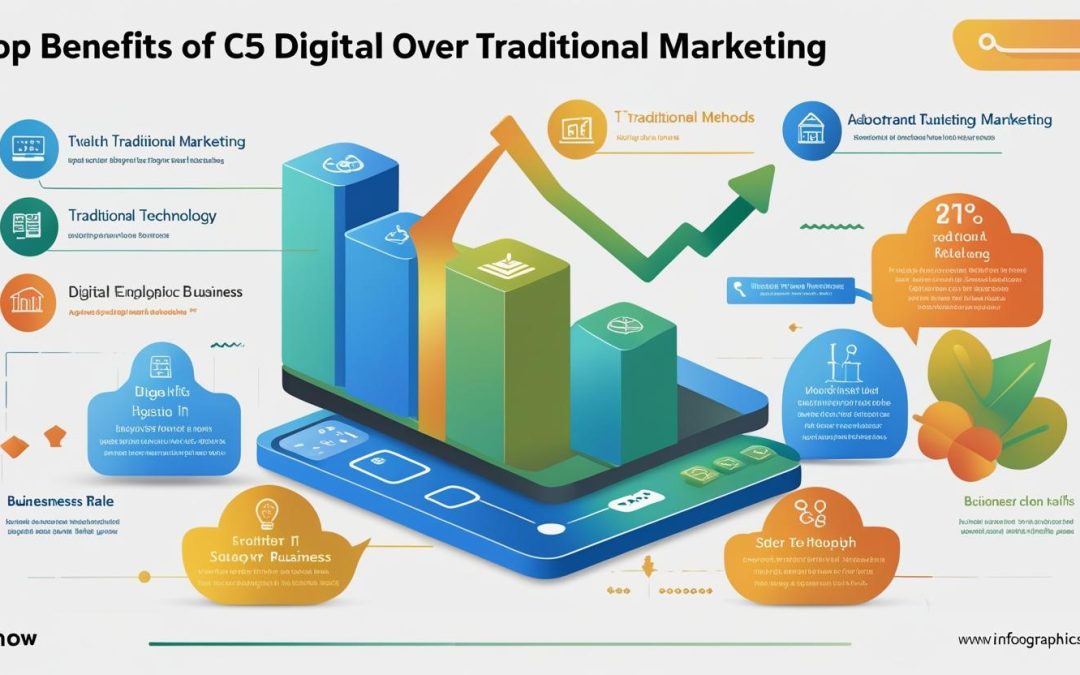
by Shashikanth Heerekar | Jun 26, 2025 | All Things about Marketing
Digital marketing offers better targeting, lower cost & real-time results. Please find out how it outperforms traditional ads for modern businesses.
Introduction
Marketing has undergone significant changes—from traditional to digital. Now, we use phones and computers. Digital and non-digital marketing help sell stuff. Some of the advantages of online advertising are fast reach and easy sharing. The advantages of website marketing and web marketing include 24/7 selling. However, there are also limitations to Internet marketing. Still, the benefits of digital multimedia are super cool.
Defining Digital Marketing: Key Characteristics and Components
1. What is Digital Marketing?
Digital marketing is the use of phones, computers, and the Internet to advertise goods and services to others. It’s fun because you can see cool videos or ads online. There are digital marketing pros, such as reaching people quickly. However, digital marketing has its drawbacks, such as requiring a stable internet connection and sometimes becoming too complex. That’s why we need to consider the advantages and disadvantages of digital marketing before implementing it.
2. Traditional Marketing vs. Digital Marketing
In the past, people sold things using newspapers, posters, and radio advertisements. These are called traditional marketing advantages. One big advantage of conventional marketing is that you don’t need the Internet! But it’s slow and hard to change, which are disadvantages of traditional marketing. When discussing the pros and cons of marketing, it is essential to consider both types. Marketing pros and cons help us pick the best way to share our ideas.
3. Benefits and Cons of Traditional Marketing
Traditional marketing benefits are particularly suitable for older individuals or those without internet access. It feels more real and trusted, which is another advantage. However, printing ads can be costly and time-consuming, which are disadvantages of traditional marketing. We must always consider the advantages and disadvantages of digital advertising to make informed choices.
4. Which One is Better?
It depends! Some prefer the new approach, which utilizes phones and computers and appreciates the digital marketing advantages. Others still prefer the old way due to its traditional marketing advantages. But no matter what, both have good and bad sides. So, when considering marketing pros and cons, remember that every idea has both bright and not-so-bright aspects.
Enhanced Reach and Targeting: The Advantages of Digital Marketing
Digital marketing is like magic! With a single click, you can reach everyone on the planet. That’s one of the big digital marketing pros. Unlike traditional marketing methods, which often involve using posters or flyers, digital approaches are faster and more engaging. With the Internet, you can show ads on YouTube, Google, or Instagram. These are all online marketing advantages!
But let’s not forget the drawbacks of digital marketing. Sometimes, your ad might reach people who don’t care, or you spend too much money. That’s why we’re discussing the advantages and disadvantages of digital marketing, so you can understand the benefits and drawbacks of digital and avoid common mistakes.
Some people still love traditional digital marketing because it feels safer and familiar. When we examine the pros and cons of advertising, we see that both approaches have strengths and weaknesses. While traditional ads stay in newspapers or billboards, digital ones pop up on our phones. This is why there’s always a battle between digital and traditional marketing.
One significant reason people love digital marketing is that it allows you to target your ads to the right audience. This is called targeting. When discussing the pros and cons of marketing, targeting is a significant advantage. Still, the disadvantages of digital marketing, such as online scams or excessive ads, are a concern.
Even with digital marketing’s disadvantages, we can’t ignore its coolness. You can see who clicked your ad and even who made a purchase. That’s a major win in social media marketing, both pros and cons. Just like the pros and cons of social media marketing, it’s all about being smart and careful with your choices.
Cost-Effectiveness: Evaluating ROI in Digital vs. Traditional Marketing
1. Cost of Traditional Marketing
When discussing traditional marketing, we consider newspapers, billboards, TV, and radio ads. These are referred to as conventional marketing methods and can be quite costly. Buying space in the paper or time on TV is super pricey. That’s one reason some people are moving away from traditional media marketing. When asked what traditional marketing is, it refers to selling products or services using conventional methods, such as print advertisements in magazines or posters. While local marketing professionals appreciate these methods because they work well in small towns, it remains challenging to measure results. This makes traditional marketing versus digital marketing tricky to choose because you might spend a lot but not know if it is effective.
2. Cheaper Options in Digital Marketing
Now, let’s discuss the Internet—digital and traditional marketing are quite different in terms of financial considerations. Digital ads are more cost-effective, and you can reach a large audience quickly. That’s one of the biggest pros of the web market. Posting on Facebook or running a Google ad costs less than TV ads. So, if we compare digital advertising vs traditional advertising, the digital one saves more money. Additionally, we can see who clicked and who made a purchase to determine if it’s effective. That’s a big win in traditional and digital marketing.
3. Which One Gives More Value?
Suppose we consider value or ROI (return on investment) and digital wins. That’s why many marketers read Marketing Pros magazine to stay updated. Still, there are online marketing disadvantages, like scams or ads being ignored. Some also mention the disadvantages of digital marketing, such as the need for an internet connection and access to smart tools. Combining traditional and digital marketing approaches is a smart strategy for achieving the best results. In digital versus conventional marketing, we must choose the approach that best fits our goals and budget.
Measurable Results: Analyzing Performance Metrics in Digital Campaigns
With digital marketing, you can see what’s working and what’s not! That’s super cool because when we compare digital marketing to traditional marketing, digital marketing helps with things like clicks, likes, and sales. It’s challenging to determine if someone has seen your ads in conventional marketing channels, such as newspapers or radio. This is a significant reason why people transition from traditional to digital marketing. We can track numbers and know what to do next.
The advantages of marketing online include knowing exactly how many people clicked your ad. This helps fix things quickly if something isn’t working. However, the disadvantages of Internet marketing can be tricky, too—sometimes ads show up to the wrong people, or the Internet stops working. Internet marketing has some drawbacks, and we must be careful about them.
Still, digital media yields clearer results than traditional advertising, such as billboards or TV. That’s why traditional vs. digital marketing always starts with this big difference—numbers! In conventional marketing methods, like the type used in old times, you can’t see who looked at your poster. This makes it harder to improve your campaign.
Additionally, in the context of Internet marketing versus traditional marketing, digital is generally faster. If an ad isn’t doing well, you can change it immediately. That’s not easy in conventional online marketing, like ads in a newspaper. The online marketing pros include testing different ads to see which works best. On the other hand, the pros and cons of advertising on radio show that while it reaches local people, it’s not always easy to track who’s listening. Social media advertising has its pros and cons—some love it, while others find it overwhelming.
Although traditional marketing methods are still effective, digital marketing enables you to track everything, making a significant difference.
Flexibility and Adaptability: Responding to Market Changes with Digital Marketing
1. Easy to Make Changes Quickly
With digital marketing, we can quickly fix any issues that aren’t working. Unlike traditional marketing, where you can’t change a newspaper ad once it’s printed, digital ads allow us to change pictures, words, or even the entire ad at any time. This makes digital advertising advantages super cool. In the digital marketing vs. traditional marketing debate, digital marketing emerges as a clear winner.
2. Testing Different Ideas
We can try many ads and see which one works best. That’s called A/B testing. It’s part of the web marketing advantage. You only get one shot in traditional marketing strategies, like billboards or flyers. However, digital technology allows us to test new ideas every day. That’s something traditional marketing strategy can’t do fast.
3. Reaching People Anytime
Digital marketing is on 24/7! That means you can show ads in the morning, at night, or anytime someone is online. This is a significant difference between traditional and non-traditional advertising, as traditional ads are only shown during set times. So, in digital vs traditional marketing, digital is more awake!
4. Updating for Trends Fast
When something new happens, such as a holiday or a trend, digital marketing can respond quickly. That’s a cool marketing strategy advantage. You can make posts, videos, or ads in minutes. However, in traditional marketing approaches, such as magazines, you wait weeks for printing. That’s why people love social media marketing pros over slow ads.
5. Matching Customer Behavior
Digital ads learn what people like and can adapt based on their online behaviour. This helps in content marketing, as opposed to traditional marketing, where content is tailored to your preferences. However, conventional marketing methods remain the same once they’re deployed.
6. Better Use of Budget
If one ad is performing well, we can allocate more funds to it. If another is bad, we stop it. That’s super smart and saves money. This is a significant advantage in terms of the pros and cons of advertising. Unlike traditional marketing versus online marketing, where money is already spent, digital helps us make better choices
Conclusion
The benefits of digital marketing help businesses grow fast! Although traditional marketing advantages are beneficial, digital marketing in B2B businesses is more effective today. The distinction between conventional and digital marketing demonstrates that both digital and traditional marketing are important. However, the future remains bright, with digital marketing surpassing traditional marketing in its digital transformation.
Top 5 FAQs
1. What distinguishes digital technology from traditional marketing?
The placement of advertisements is where digital and conventional marketing diverge most. Traditional marketing uses newspapers, TV, or radio. Digital marketing uses the Internet, like websites and social media. Digital is faster, cheaper, and easier to track. Traditional methods still work, but they are slower and more difficult to measure.
2. Why is digital marketing better for B2B businesses?
Digital marketing in B2B is effective because it enables companies to connect with other businesses quickly. It’s easier to explain big services with tools like email, LinkedIn, and websites. Compared to traditional methods, B2B web marketing is more affordable and has a wider audience. It’s smart and helps build long-term business friendships.
3. Are there still any benefits of traditional marketing?
Yes! Traditional marketing benefits still exist. It’s trusted, especially in local markets. Things like flyers, radio, and billboards can feel more personal. Sometimes, people trust printed ads more than online ones. While digital marketing is popular, the advantages of traditional marketing still benefit businesses in certain areas or industries.
4. What are the top benefits of online and digital marketing?
The top benefits of digital marketing include fast reach, low cost, and easy tracking. You can change ads quickly and target the right people. Online marketing also means 24/7 access and global reach. It’s ideal for both small and large businesses that want to grow quickly.
5. How does digital marketing support the move from traditional to digital?
Traditional digital marketing refers to using the Internet as a medium as opposed to conventional media such as newspapers or television. The digital marketing and traditional marketing mix help during the change. Start with a website or social media. This makes the shift easy and allows you to enjoy the benefits of web marketing, such as increased reach and lower costs.
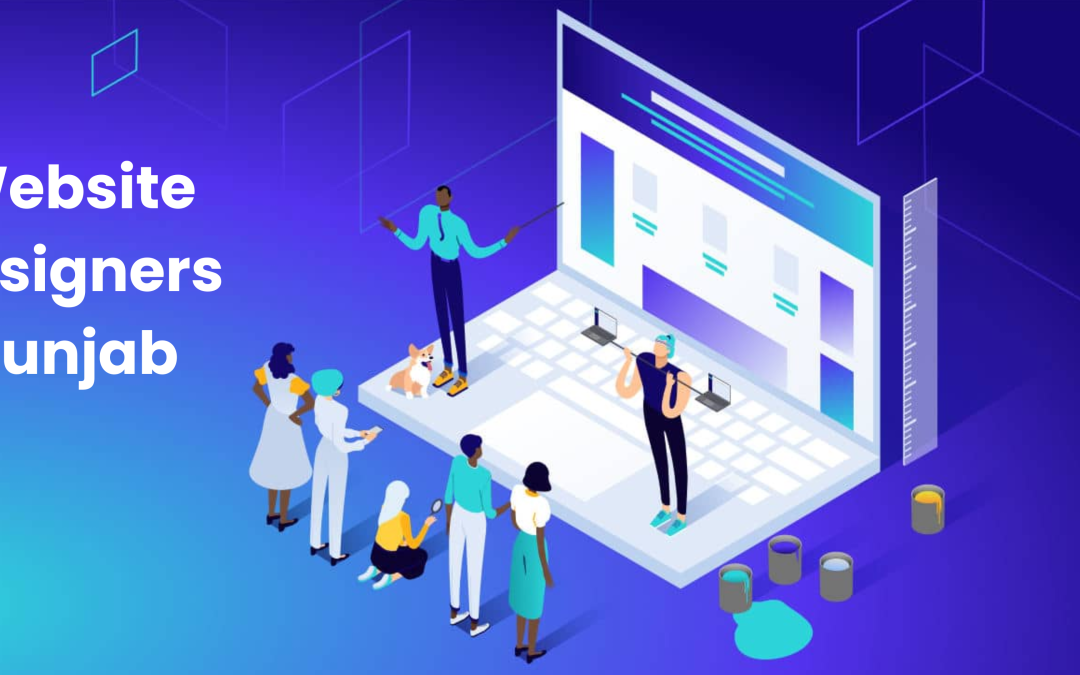
by Shashikanth Heerekar | Jun 24, 2025 | All Things about Marketing
Are you looking for website designers in Punjab? Discover how local designers build great websites, what they charge, and how to choose the right one for your business. Simple and easy to understand.
Introduction
Hey, have you ever considered how websites are made? Someone designs all that when you open a clothing store’s page or a school website. And guess what? In Punjab, there are so many talented people doing this job. They’re called website designers, and their work is super important nowadays.
Imagine you have a business or even just an idea — if you don’t have a website, people might not even know you exist online. That’s why these website designers in Punjab are in high demand. They help make websites that look good, open fast, and are easy to use — even on a phone. Whether running a small beauty salon in Ludhiana or starting a new tuition centre in Amritsar, a good website can help you reach more people. And the best part? Designers here know how to do it well and often at a budget that works for everyone.
In this blog, I’ll explain why web design is growing in Punjab, what skills these designers have, how to hire one, and what the future looks like. So stay with me; I’ll explain it like we’re just chatting over tea.
The Growing Demand for Web Design Services in Punjab
Everyone Wants to Be Online
These days, every shop, school, or business wants a website. And why not? It’s like having a 24/7 online shop where people can learn about you and buy from you. A website helps build trust, showcases your products or services, and gives your business a more professional image. Even people who offer home services, like electricians or tutors, now want a simple website so customers can find them easily online.
Even Small Businesses Are Catching On
Everyone wants a piece of the online world, from the chaiwala on the corner to big stores in malls. It’s not just about big brands anymore. Small businesses realize that with a simple website, they can show their location, menu or products and even accept online orders or bookings. Website designers in Punjab are helping these businesses get started with basic, affordable websites that do the job perfectly.
A Hub of Young Talent
Punjab is full of young, smart designers who always learn new tricks and tools. Many of them are freelancers or work with local agencies. while others are employed full-time by companies. They’re doing great work, not just for local clients but also for people sitting across the world! Thanks to the internet, Punjabi designers also work on international projects and global businesses using an EOR in India can tap into this talent remotely. Many learn from YouTube, online courses, or design schools and keep upgrading their skills to match global standards.
Key Skills and Expertise Required for Web Designers
1. They Know What Looks Good
Web designers have an eye for beauty. They understand how to use colours, fonts, and images in a way that is easy on the eyes. They also keep things neat and organized. When you visit a website that feels calm and professional, that’s usually the result of good design. These designers ensure the site doesn’t look crowded or confusing and that everything is placed where a visitor expects it to be.
2. They Know the Tech Stuff
Don’t worry if you find terms like HTML, CSS, or JavaScript confusing. Web designers know all about them. They use tools like WordPress, Wix, or custom code to build websites from scratch. Some even use special design software like Adobe XD or Figma to make mockups first. They stay updated with the latest technology to create fast, secure websites that work smoothly.
3. They Make Mobile-Friendly Sites
Designers in Punjab understand this very well. That’s why they build websites that work on every screen size — big laptops, tablets, and small phones. They use “responsive design”, so the website automatically adjusts to fit any device without looking weird or broken.
4. They Understand SEO
Web designers in Punjab are not just artists — they also know some marketing tricks! They ensure that search engines like Google can find and rank your site. This is done using keywords, optimizing page speed, adding alt text to images, and writing good headings. For example, they’ll use keywords like “website designers in Punjab” in the right places to help your website rank better. Some even stay updated with global practices by studying how advanced markets operate — such as learning techniques used in San Francisco SEO services — and applying them locally for better results.
5. They Talk and Listen Well
Being a good web designer isn’t only about building things—it’s also about understanding what the client wants. Designers in Punjab usually speak multiple languages, such as English, Hindi, and Punjabi. This helps them talk easily with clients and avoid any confusion. They take the time to listen to your ideas, explain their own, and work together with you.
How to Choose the Right Web Designer for Your Project
1. Ask to See Their Work
Every designer has a unique style. Ask to see a few websites they’ve worked on before. Check if their design matches your taste. You might want a colourful, sweet-looking site if you’re opening a bakery. If you’re running a school, maybe something clean and informative.
2. Read Reviews or Ask Others
Look for feedback on how well the designer communicates, how fast they deliver work, and whether they provide support after the site is live. Word-of-mouth recommendations also work well—ask your friends or business groups.
3. Talk Money and Time
Ensure you know how much the website will cost and how long it will take. Some designers charge a flat fee, while others charge based on hours or features. Also, check if there are any extra costs like hosting or buying a domain name.
4. Ask About After-Support
A good website needs care even after it goes live. Things break sometimes or need updates. Ensure your designer offers support for a few months or gives you a plan in case you need help later.
5. Check Their SEO Knowledge
If a website doesn’t appear on Google, it won’t bring in customers. That’s why your designer must know at least the basics of SEO. Ask them how they optimize websites for search engines, especially for keywords like “website designers in Punjab.”
Trends in Web Design: What Punjab’s Designers Are Focusing On
1. Speed Matters
Nobody likes slow websites. Designers in Punjab are now using lightweight themes and compressed images to ensure websites load fast. They also test websites using tools like Google PageSpeed Insights to ensure everything works quickly.
2. Keeping It Simple
Simple is beautiful. Nowadays, websites focus less on heavy graphics and more on clean, minimal layouts. A neat design with clear sections, bold headings, and white space makes websites easier to read and understand.
3. Mobile-First Thinking
Earlier, designers built websites for desktops and then adjusted them for mobile. But now, they create with phones in mind first. Since most users browse on phones, focusing on small screens first and then going bigger is smart.
4. Dark Mode Is In
Dark mode isn’t just cool—it’s also easier on the eyes, especially at night. Web designers are allowing users to switch to dark mode, and it’s becoming a must-have feature, especially on content-heavy sites like blogs and portfolios.
5. Local Languages
English is great, but not everyone reads it well. That’s why many websites now include options in Punjabi and Hindi. This helps businesses connect better with local customers who feel more comfortable reading in their language.
Case Study: Successful Web Design Projects from Punjab
At our web design studio in Punjab, we’ve worked with a wide range of people—from local shop owners and schools to service providers and startups. Each project is unique, and we treat it with personal care, big or small.
We’ve seen how even a simple website can make a big difference. Some clients came to us with no online presence at all, and within weeks of launching their new site, they started getting calls, messages, and even orders from places they never expected. It feels good to know that our work is helping them grow.
We focus on design and user experience. We always keep things simple, mobile-friendly, and easy to navigate. We take time to understand what the client needs—not just what looks fancy. Most importantly, we build websites that load fast, work on all devices, and are easy to update when required.
Every time we finish a project and see our client happy, it reminds us why we love doing this. Our goal has always been to create websites that work for today and in the long run.
Conclusion:
Web design in Punjab is growing fast. With talented designers, better tools, and more people understanding the value of being online, the future looks bright. Whether it’s a small shop or a big company, everyone realizes that having a good website helps.
If you’re starting a business or already running one, this is the right time to take it online. You don’t need to know coding — you need the right website designer who understands your goals. A good website can help you reach more people, grow faster, and stay ahead in today’s digital world.
Frequently Asked Questions (FAQs)
1. What is the role of a website designer in Punjab?
A website designer in Punjab helps you build your online presence. They plan how the website should look, choose the right colours, place the images and text, and ensure everything looks neat and clean. They also write the code behind the website and check if it works well on mobile phones and computers. Their job is to turn your ideas into a working website that people can visit anytime.
2. How much does it cost to hire one?
The price for hiring a website designer in Punjab depends on what kind of website you want. For a simple one-page or basic business site, the cost might be between ₹5,000 to ₹10,000. If you want more features like an online shop, customer login, or extra pages, the price can increase to ₹25,000 or even more. It’s always best to discuss your budget and needs before starting.
3. Can they work for people outside Punjab?
Yes, absolutely! Many website designers in Punjab work with clients from different parts of India and other countries. You don’t need to meet them in person, thanks to online tools like Zoom, Google Meet, and WhatsApp. You can share your ideas, get updates, and see the website progress — all from the comfort of your home or office, no matter where you are.
4. What tools do they use?
Website designers use different tools depending on the project. They often build websites using platforms like WordPress, Wix, or Shopify. They write code using HTML and CSS. They may also design the site’s look using Figma, Canva, or Adobe XD. These tools help them create modern, good-looking websites and are easy to use.
5. How much time does it usually take to make a website?
The time it takes to build a website depends on how simple or big it is. A basic website with just a few pages can be ready in 3 to 5 days. But if you want many features, pages, or special functions, it might take 1 to 4 weeks. Once the designer understands your needs, they will usually give you a clear idea of how long your project will take.
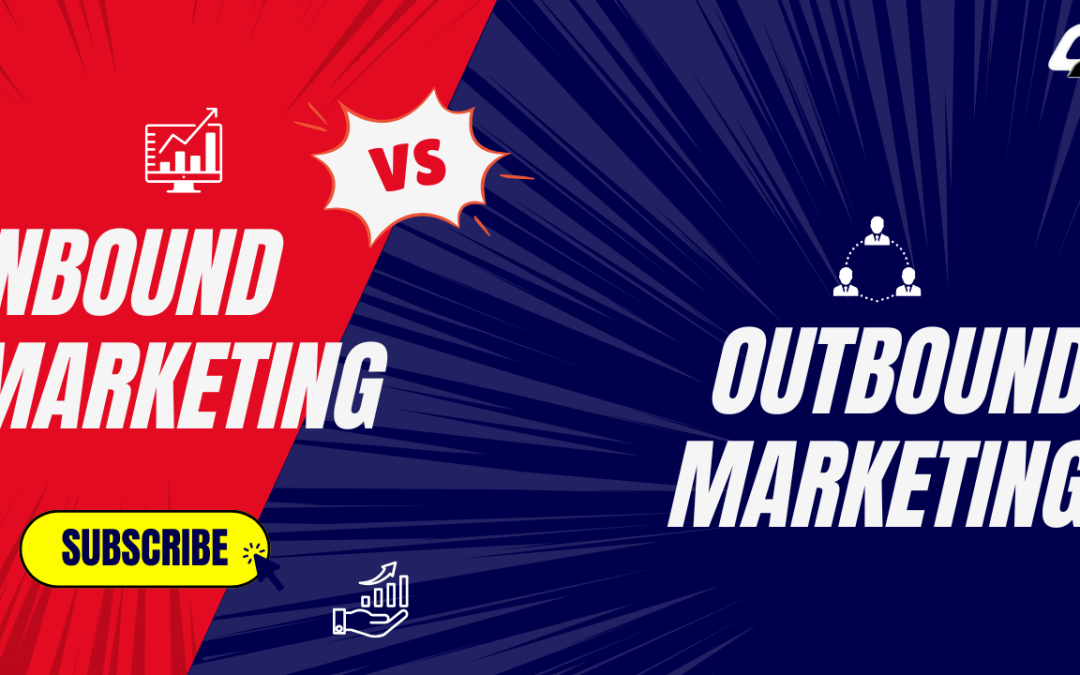
by Shashikanth Heerekar | Jun 14, 2025 | All Things about Marketing
Discover inbound vs. outbound marketing B2B strategies. Learn which approach drives better leads, sales, and business growth.
Introduction
B2B marketing is how one business sells to another. It helps companies work together to grow. We use B2B marketing strategies to tell other businesses about our services. Good B2B communication builds trust. Big companies use different ways to reach other businesses. Let’s learn the main parts of B2B marketing approaches below.
Understanding Inbound Marketing in B2B
What is Inbound Marketing?
Inbound marketing is when companies make cool social media postings, videos, and blogs to attract other businesses. It’s like making a super fun playground and inviting others to play. In B2B, inbound marketing is used to help other companies to learn and get excited. They don’t push their stuff; they make you want to come alone. This is the big difference between outbound and inbound marketing. Inbound marketing vs outbound is like asking someone nicely versus yelling from a truck. The inbound versus outbound way is softer and smarter for business. So, inbound or outbound, companies pick what works best!
Key Components (Content, SEO, Email Nurturing)
Let’s talk about the tools! First, there’s content like blog posts and videos. These teach others cool stuff and make them want to work with your business. Then comes SEO, which is magic to help others find you on Google. If someone types a question, SEO helps your page pop up. That’s super helpful for inbound and outbound digital marketing. Last is email nurturing. This means sending friendly emails to businesses who might buy later. You help them and don’t just shout, “Buy now!” That’s the nice part of inbound vs outbound marketing. You’re a friend, not a pushy seller. So, remember: inbound marketing vs outbound marketing is about being helpful and not noisy.
Benefits of Inbound Marketing for B2B
The best thing about inbound marketing is that it brings the right people to you. It’s like having a lemonade stand; all the thirsty people just come. Businesses love it because they don’t waste time on folks who aren’t interested. It builds trust and saves money. That’s a big difference between inbound and outbound ways. Inbound marketing vs outbound is cheaper, smarter, and works longer. While outbound and inbound help, inbound gives you better friends in business. That’s why many companies now pick inbound versus outbound marketing every time.
When Should B2B Businesses Use Inbound Marketing?
Use inbound marketing when you want to make friends first before selling. It works best when selling takes time and trust. If your stuff is expensive or tricky, inbound vs outbound wins because it teaches and explains. For new businesses or launching new products, go inbound marketing vs outbound marketing to get known. But don’t forget, sometimes a mix of inbound and outbound is good. Like peanut butter and jelly, both inbound and outbound can work together. Just pick the one that fits your story best.
Understanding Outbound Marketing in B2B
What is Outbound Marketing?
Outbound marketing is the process by which a business contacts others first. It’s like knocking on a door and saying, “Hey, want to buy this?“ In B2B, the business goes after other companies instead of waiting for them to come. That’s the big thing in inbound vs outbound marketing. In marketing, inbound vs outbound, inbound is quiet and smart, while outbound is loud and direct. Some people like one better, but both can work. So when we think of outbound or inbound, we ask which helps us reach the right business.
Examples (Cold Emails, Ads, Direct Mail, Telemarketing)
Let’s look at marketing outbound and inbound examples. One is cold emails, where businesses email others without being asked. Then, there are ads, like on websites or social media. They pop up to grab your attention. Next is direct mail—yes, letters in the mailbox! Finally, we have telemarketing, where someone calls to discuss a product or service. These are clear outbound vs inbound examples. With outbound and inbound marketing, the outbound side always reaches out first. So when someone asks, “What is the difference between outbound and inbound marketing?” it’s like chasing vs inviting.
Benefits of Outbound Marketing for B2B
Outbound marketing helps B2B companies reach a lot of people quickly. It’s good when you need fast results. Outbound can tell many businesses fast if you’re selling something new or have a special deal. That’s why outbound is best for quick action in the difference between inbound and outbound. In marketing inbound vs outbound, the outbound way makes more noise. And noise means attention! But remember, too much noise can bother people. So, inbound and outbound marketing, be smart and use both sometimes. It’s not always about picking inbound vs outbound marketing but using both correctly.
When Should B2B Businesses Use Outbound Marketing?
Use outbound marketing when you want fast attention. If you’re launching something new or want to reach more businesses quickly, go with outbound vs inbound. When people don’t know your brand yet, outbound helps them learn fast. It’s like waving your hands in a crowd, saying, “Look at me!“ In the world of inbound & outbound marketing, there’s no one-size-fits-all. Some situations need outbound marketing vs inbound marketing—like when you don’t have time to wait. So don’t worry too much about outbound and inbound marketing—pick what works for your business now.
Key Differences Between Inbound and Outbound Marketing
Inbound marketing is like playing with your friends and letting them come to your house when they want. Outbound marketing is like knocking on everyone’s doors and asking them to play. In business, this is the big thing about inbound vs outbound marketing. With inbound marketing and outbound marketing, you let others find you. You make cool blogs, videos, and fun things so they want to come to your website. But with outbound marketing, you send emails and ads and even call people to tell them about your stuff.
When discussing inbound and outbound marketing, we see that one is soft and the other is strong. Inbound tactics are slow, but make friends. Marketing outbound is fast but can be loud. That’s why businesses use both inbound and outbound marketing together. It’s like mixing ketchup and mustard – it just works better! Some days, you need outbound and inbound; other times, just one.
People always ask, “Which is better, inbound or outbound marketing?“ Well, it depends! If you want to teach and help first, use inbound marketing outbound. If you’re telling many people fast, use outbound marketing vs inbound. Some smart businesses mix it up with marketing inbound and outbound tricks. They blog and also send emails. That’s what we call outbound marketing and inbound marketing.
The real answer to outbound vs. inbound marketing is this: don’t pick just one. Mix them. Use them together like a peanut butter and jelly sandwich. That’s how grown-up companies do inbound vs. outbound the smart way. Whether outbound marketing means pushing info out or inbound versus outbound marketing bringing people in, both are important in inbound and outbound business fun.
Which Strategy is Better for Your B2B Business?
If you are wondering whether to use outbound or inbound, don’t worry—it’s like picking your favourite superhero. Both can be awesome, depending on the job. In B2B, some companies like inbound marketing because it’s calm and friendly. Others choose outbound because it’s fast and loud. So, outbound vs inbound depends on what kind of business you have.
Let’s think about what inbound and outbound marketing is. Inbound means you share blogs, videos, and helpful tips so people come to you. That’s why people love inbound marketing examples like tutorials or guides. But outbound means you go out and find people—by calling, emailing, or showing ads. That’s why we see outbound marketing examples like TV ads or cold calls.
Still confused? Let’s ask again: what is inbound marketing vs outbound marketing? Simple! If you want people to find you, go inbound. If you want to find people first, go outbound. That’s the big difference between inbound marketing and outbound marketing. Or, as my teacher says, the difference between inbound and outbound is in who makes the first move.
Some companies use both. That’s called inbound & outbound marketing or inbound outbound. Using both helps you get more customers. It’s like using both a fishing rod and a net—you catch more fish! And hey, the smart way is to look at your business and ask: “Do I need outbound marketing, inbound marketing, or both?”
So, whether it’s sales inbound vs outbound or just outbound vs inbound marketing, the answer depends on your goal. There’s no one-size-fits-all. Try inbound if you sell something fancy and must explain it a lot. If you need quick attention, go outbound. Or do both and win.
Case Studies & Real-World Examples
Successful B2B Inbound Campaign
Let’s look at a cool inbound marketing story! A big custom software development company wanted to help businesses fix problems Instead of calling people, they made a blog and videos. These were fun and helpful, and guess what? Other companies started visiting their website to learn! That’s how inbound marketing is done right. This is a perfect inbound example of how being helpful works better than shouting. They didn’t chase anyone. They let the customers come. That’s what inbound marketing means—attracting people by being nice! So, now we can answer the following questions: What are inbound and outbound marketing? Inbound is where they come to you. And that’s the inbound vs outbound truth.
Effective B2B Outbound Tactics
Now, let’s look at outbound marketing. Another business needed fast sales. They used emails, phone calls, and ads. That’s what we call outbound inbound marketing. They reached out to people first. These are classic outbound marketing examples. It worked! People noticed the brand, and some bought the product. That’s what defines outbound marketing—reaching out first. So now we know what outbound marketing is—it’s like saying, “Hey! Look at this!” That’s a big difference between outbound and inbound marketing. So, if you’re thinking of inbound or outbound meaning, remember: outbound is loud, and inbound is soft. They both work in their way!
Hybrid Strategy Success
Let’s talk about a mix of both—inbound and outbound together! A company made cool blogs and guides (inbound), sent emails, and placed ads (outbound). That’s what we call a hybrid strategy or marketing inbound outbound. It’s like using a net and a fishing pole. They got lots of leads! This is how smart businesses win using both inbound marketing and outbound methods. So, the big inbound-outbound difference is how you start the talk. But if you mix both, you get the best results! Now you know the real difference between inbound and outbound sales.
conclusion
Inbound vs. outbound sales is like being a helper or a chaser. With marketing inbound vs. outbound, some businesses teach, and others shout. Outbound and inbound meanings are simple: one gives information and grabs attention. Knowing the definition of marketing inbound helps a lot. So, mix both! That’s the best way to go in outbound marketing vs. inbound strategies.
FAQs
Is inbound marketing more effective for B2B startups?
Yes! For B2B startups, inbound marketing helps build trust by sharing blogs, guides, and videos. It costs less than ads and generates real interest. That’s why inbound marketing often wins over outbound in the early stages. Both help, but startups usually start with inbound to grow smarter.
Can outbound marketing still work in 2025?
Absolutely! Even in 2025, outbound marketing, like emails and calls, can still get attention fast. While some love inbound marketing, others still need direct contact. The key is doing outbound vs. inbound the right way—don’t be annoying; be helpful! That’s what makes outbound sales vs. inbound successful today.
How do you balance both strategies in a B2B plan?
Mix it up! Use inbound to educate and attract customers and outbound to follow up and close deals. That’s the secret behind sales inbound vs. outbound success. Businesses win when they blend the power of both. Balancing inbound vs. outbound marketing helps you cover more ground in your plan.
What are some examples of inbound and outbound marketing?
Examples of inbound marketing include blogs, SEO, and helpful videos. Examples of outbound marketing are cold emails, ads, and phone calls. This shows the real inbound and outbound difference. Both tools are used by smart businesses, depending on their goals and how fast they want results.
What is the difference between inbound and outbound sales?
There is a straightforward distinction between incoming and outbound sales. Inbound waits for leads, while outbound waits to find leads. Think of inbound vs. outbound sales as fishing with bait versus casting a net—both work in different ways and at other times.
























